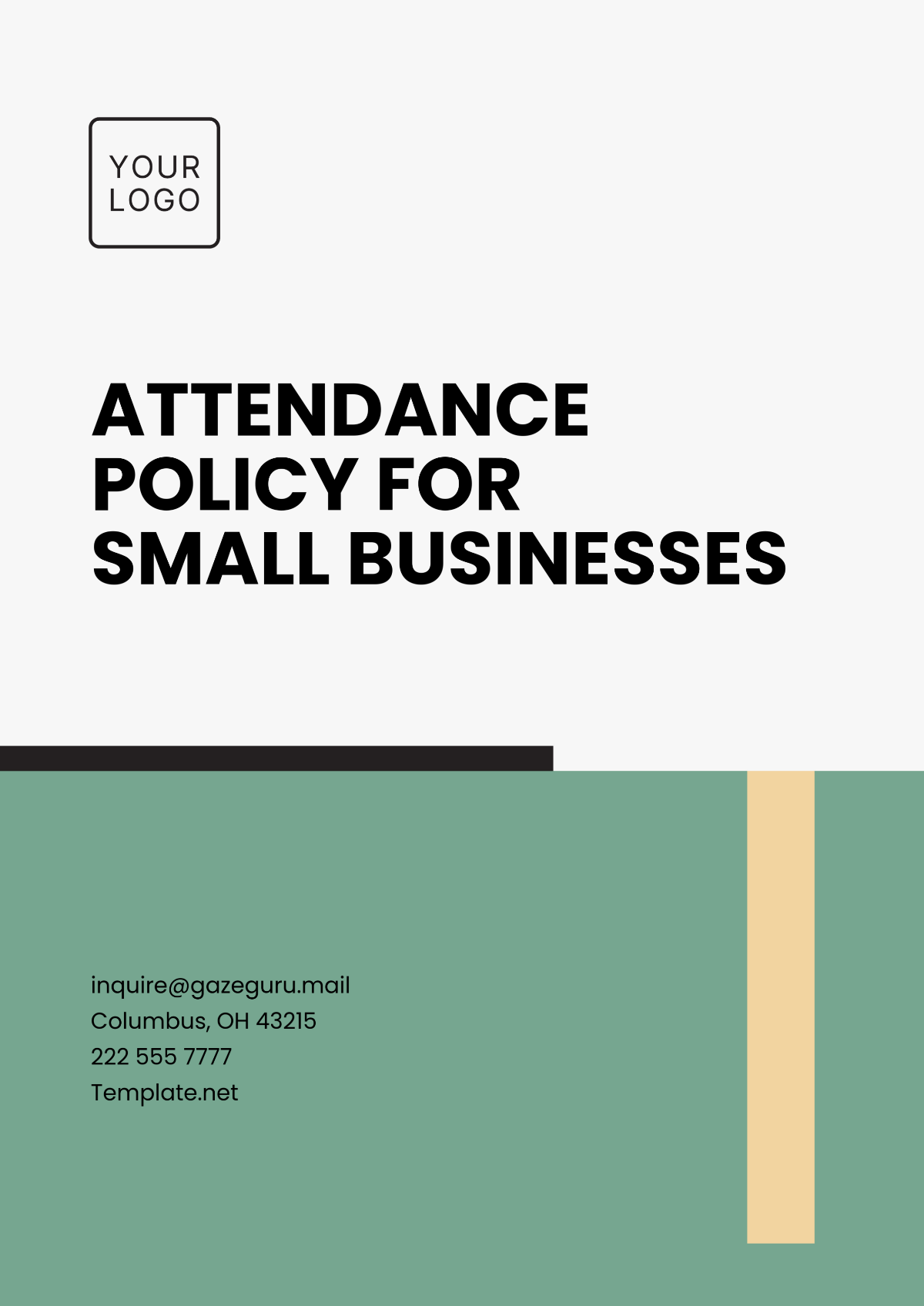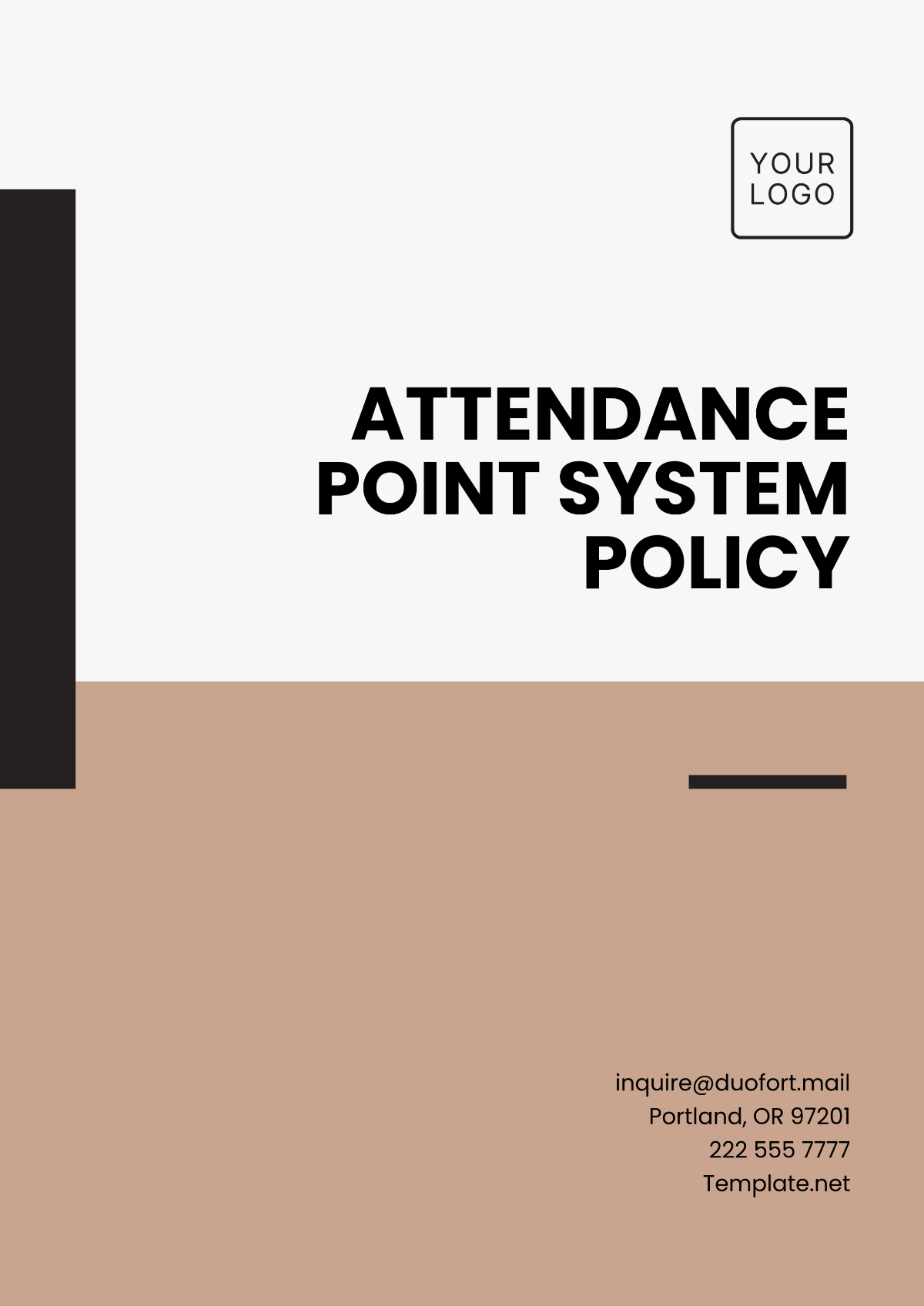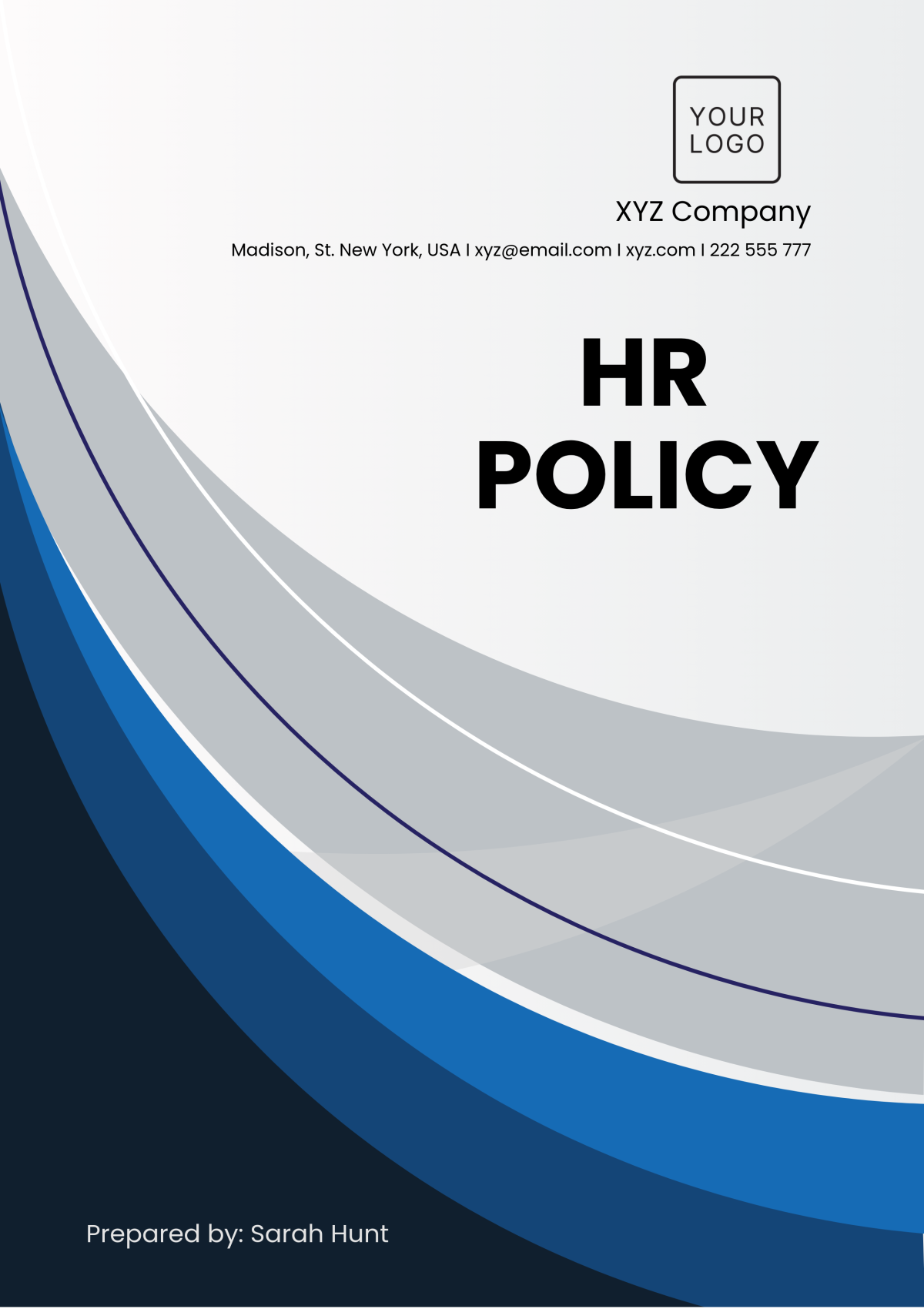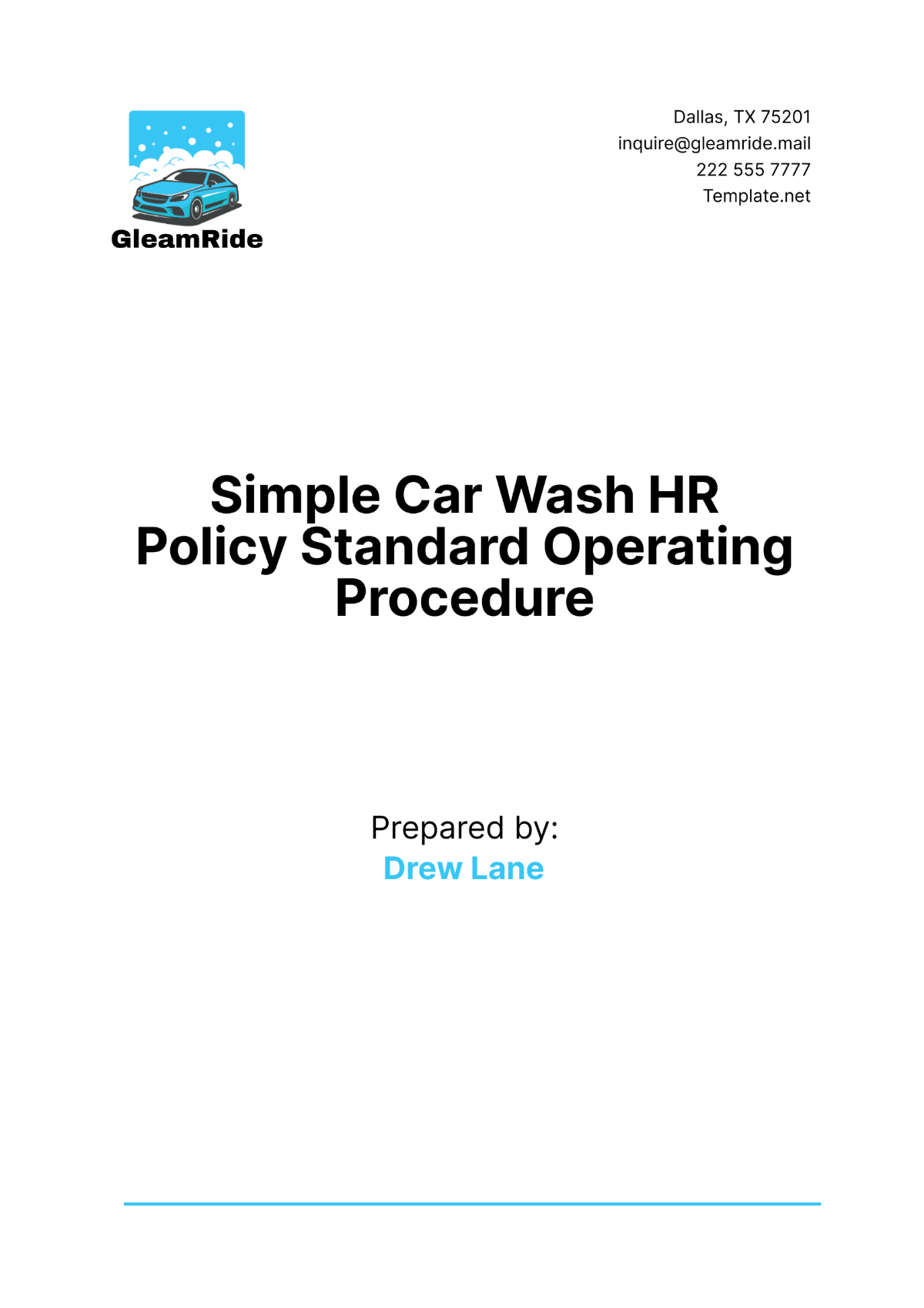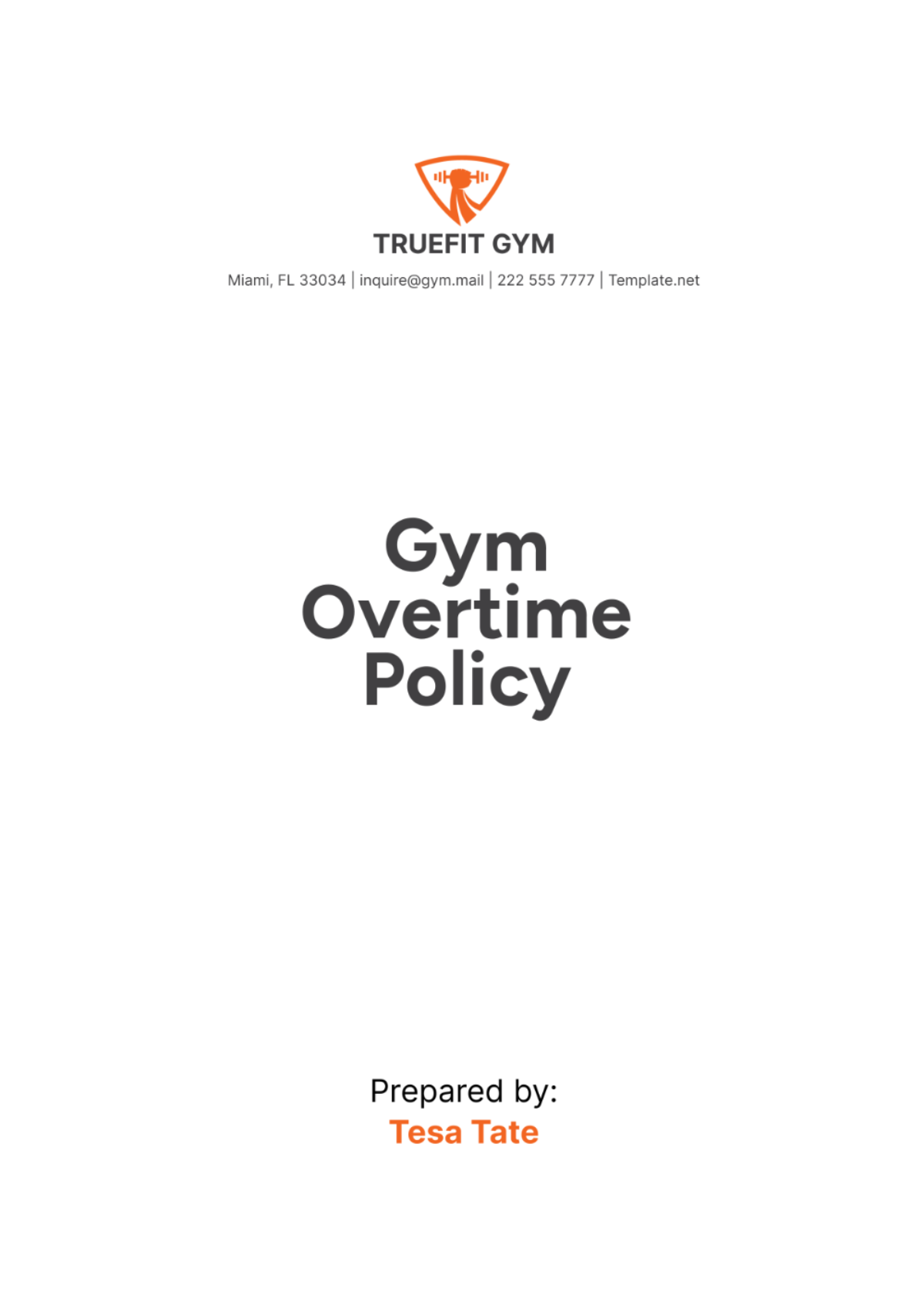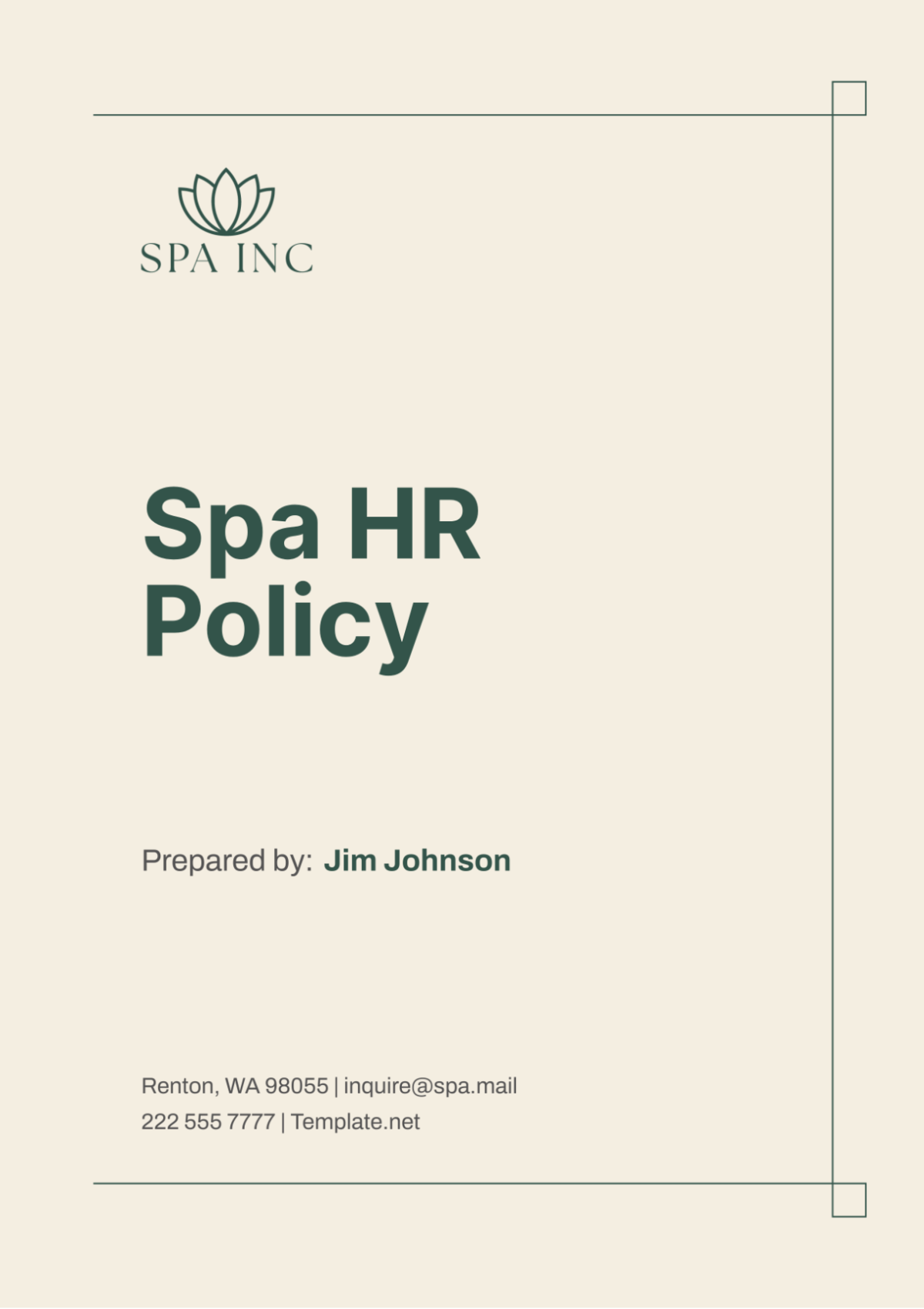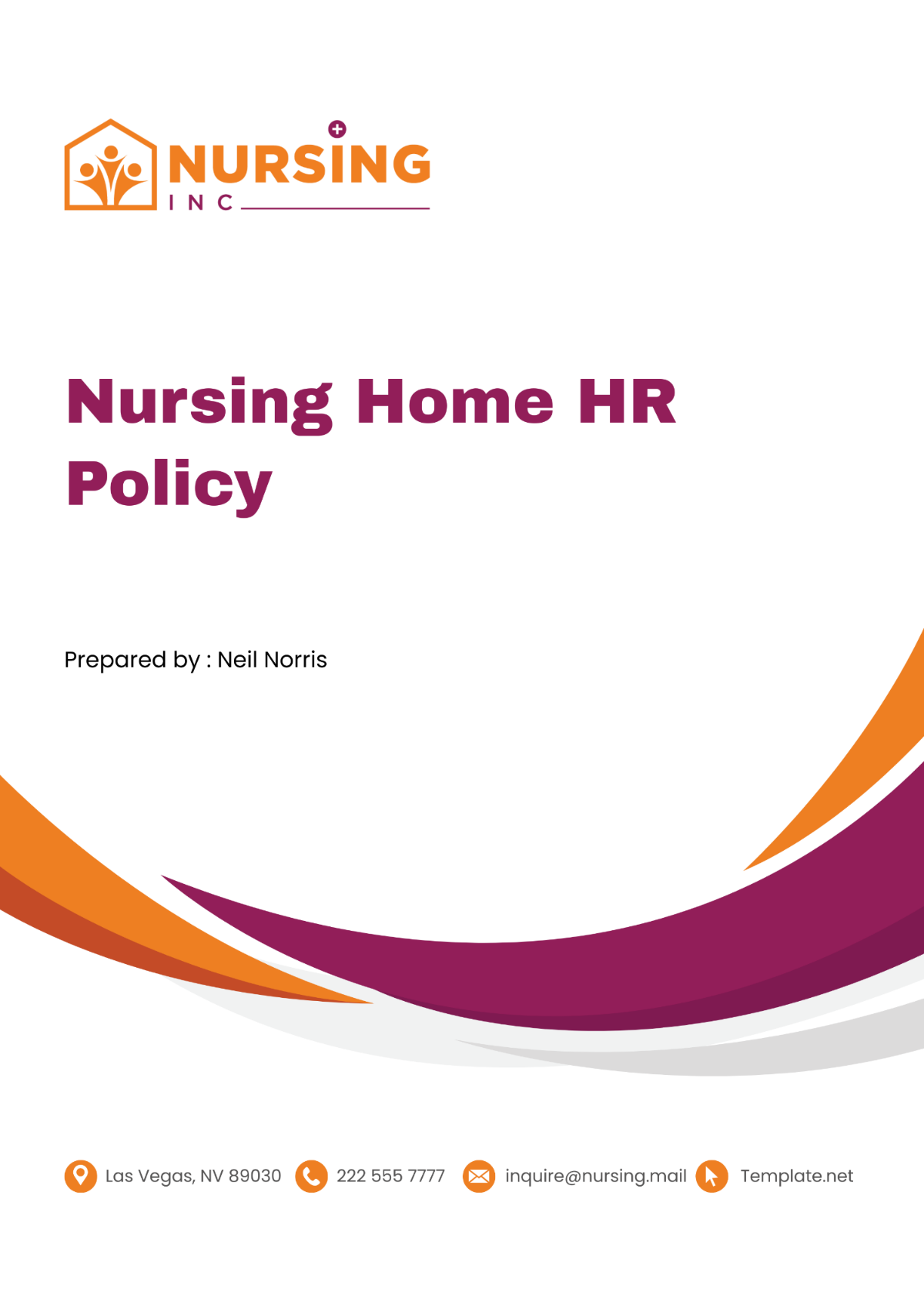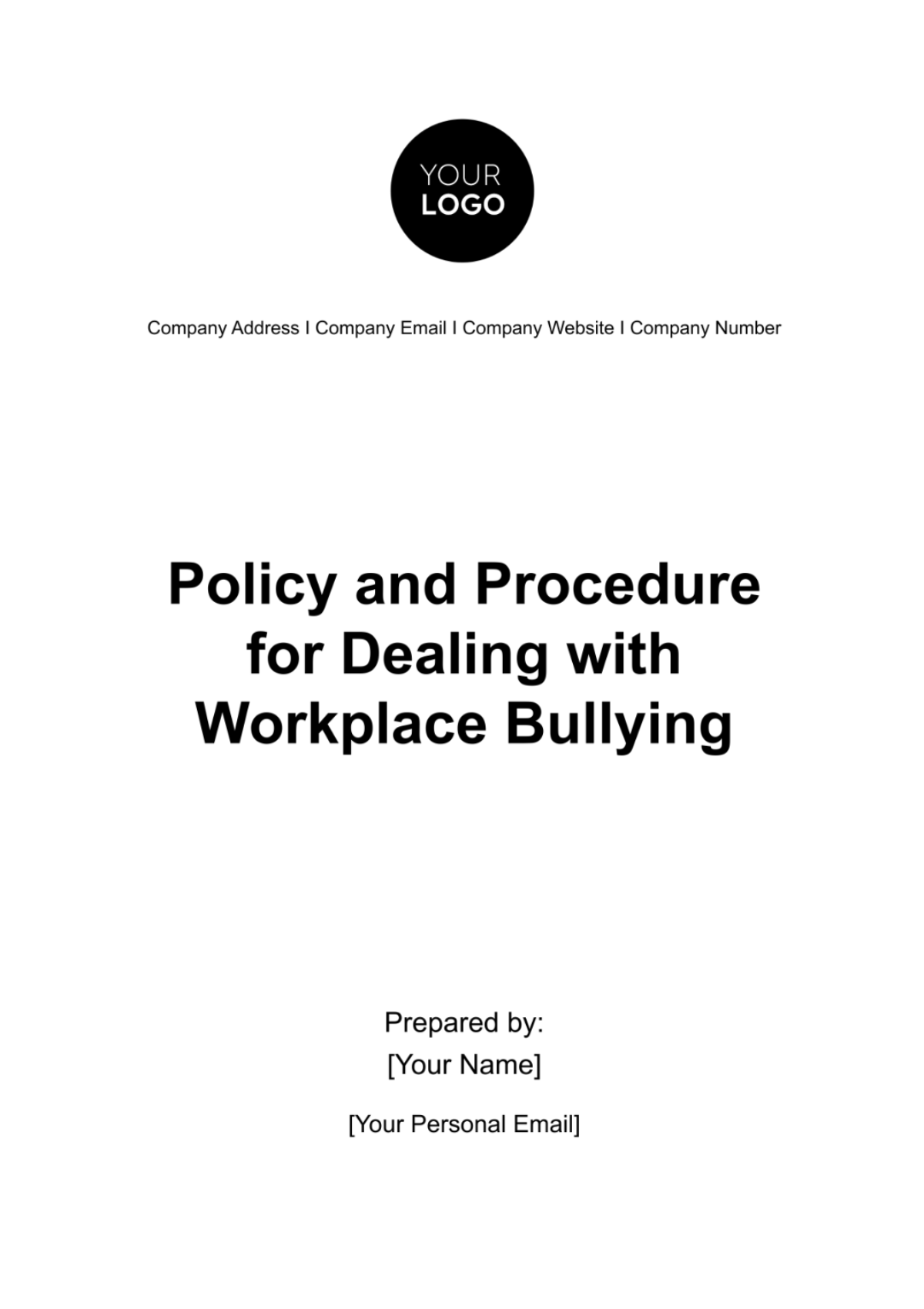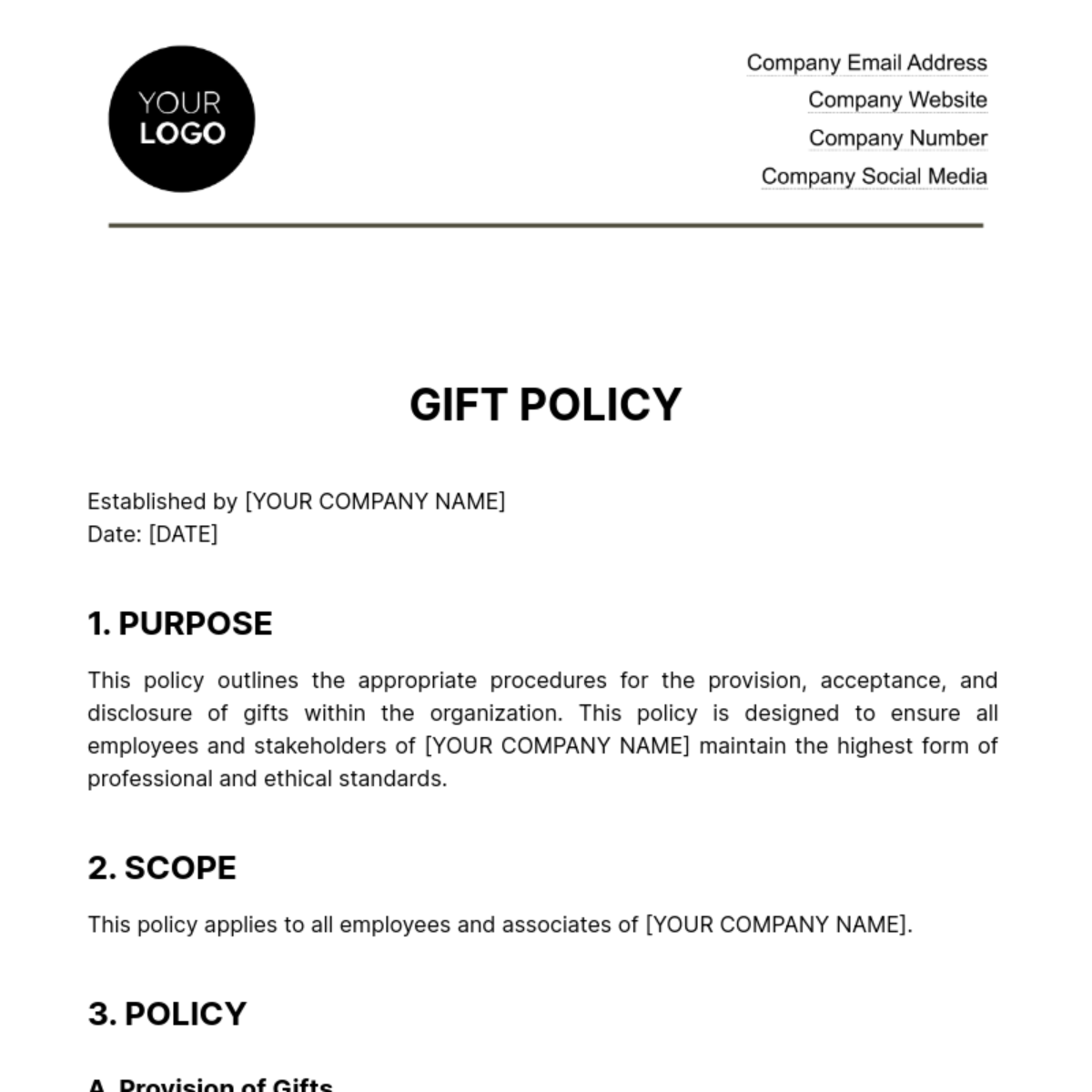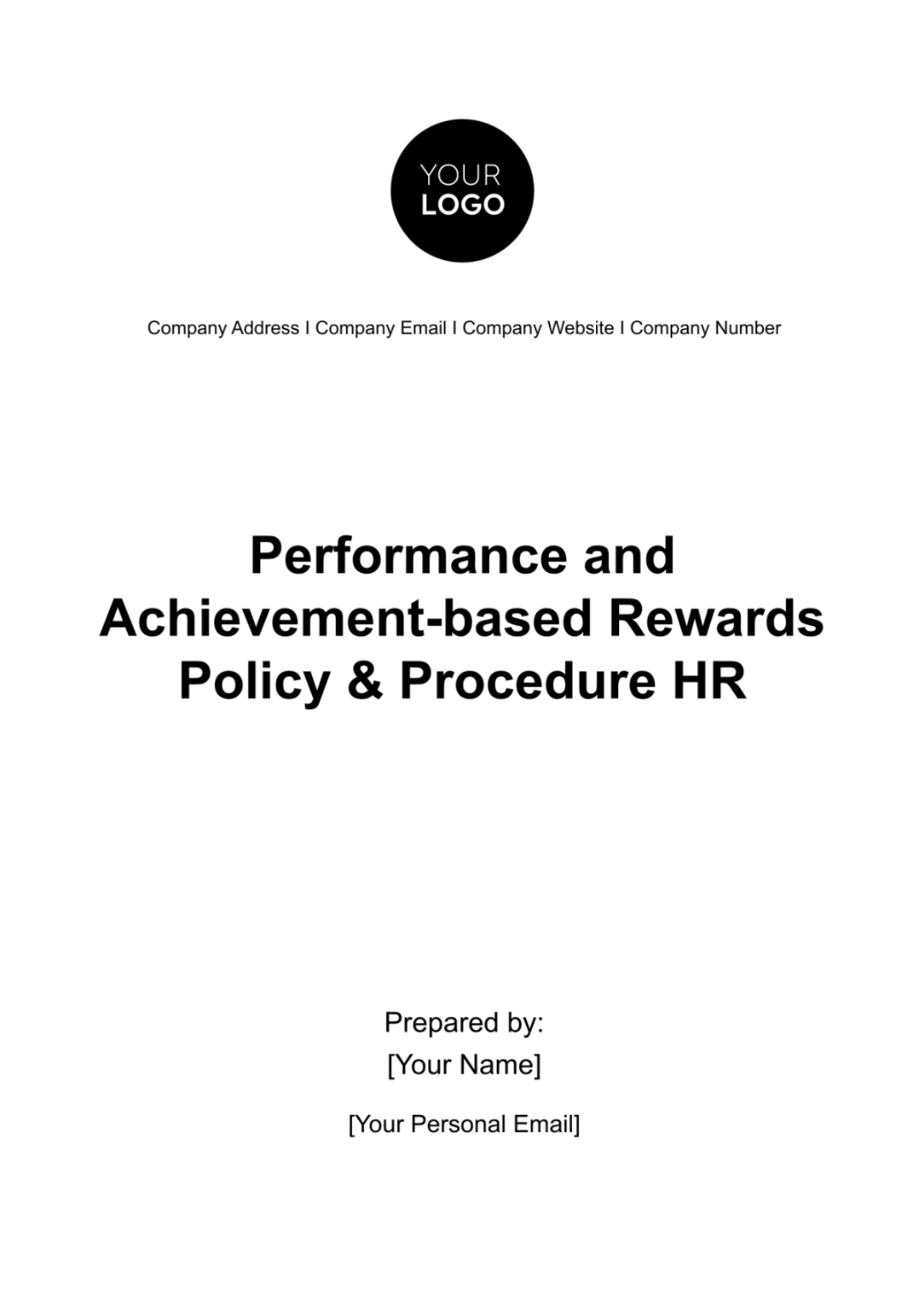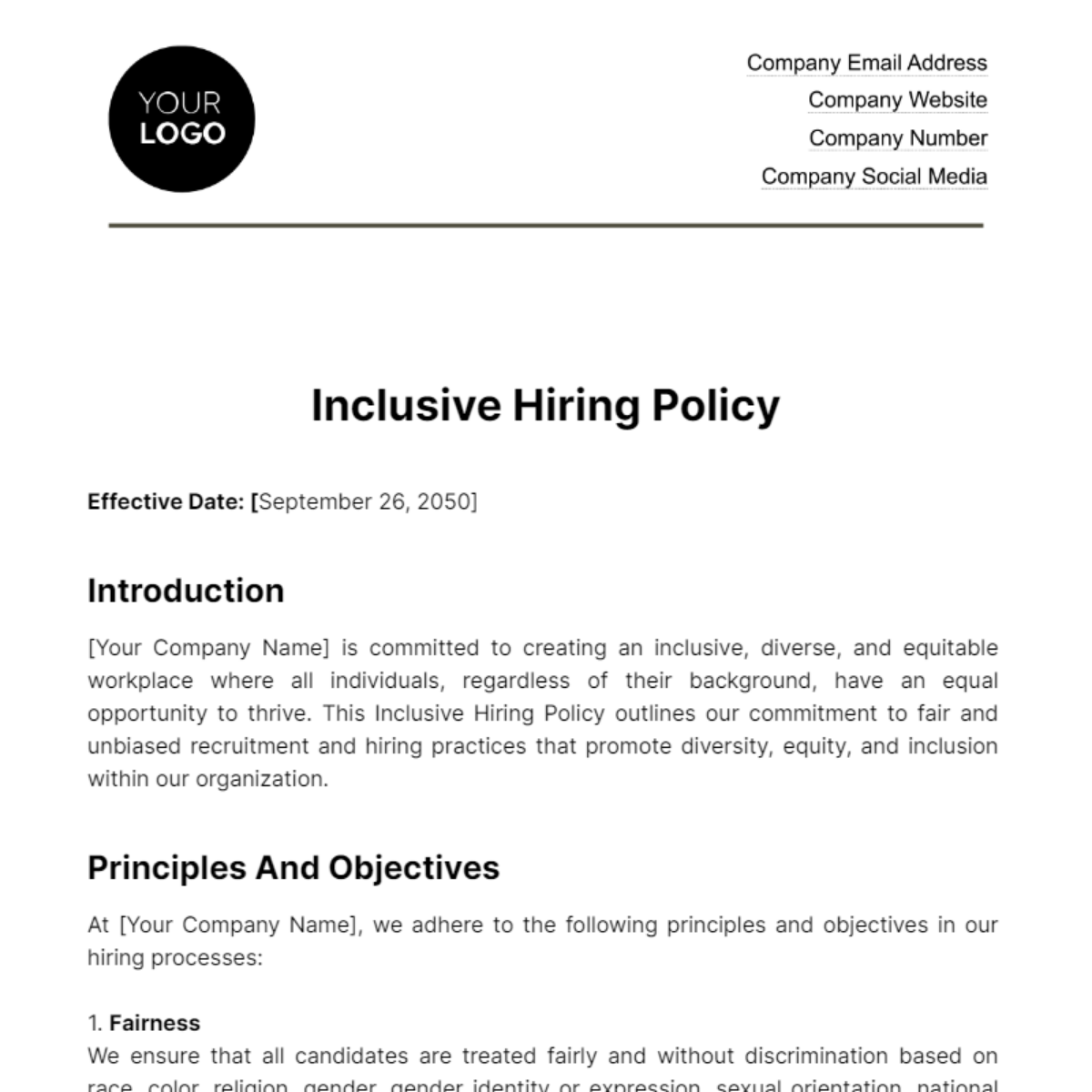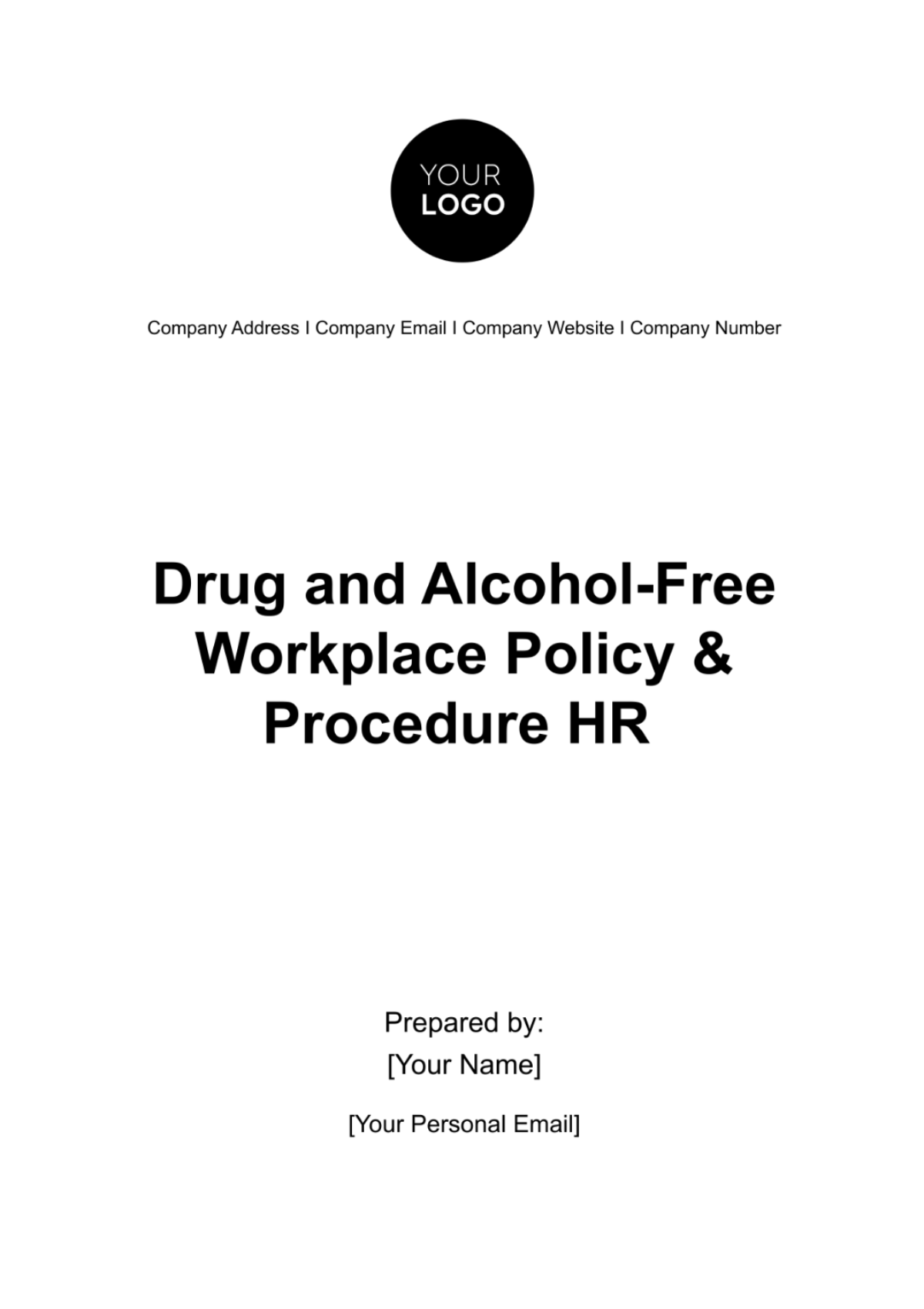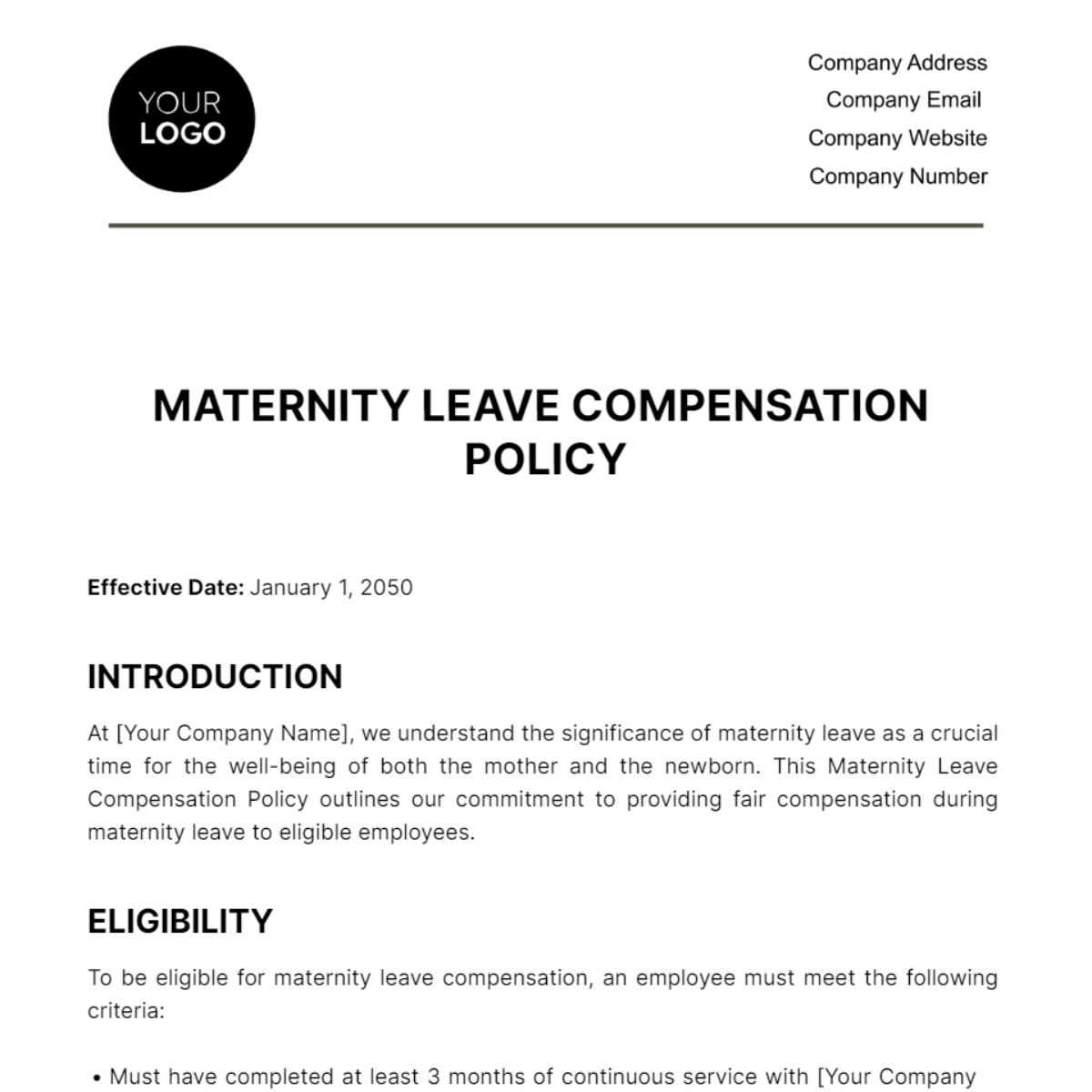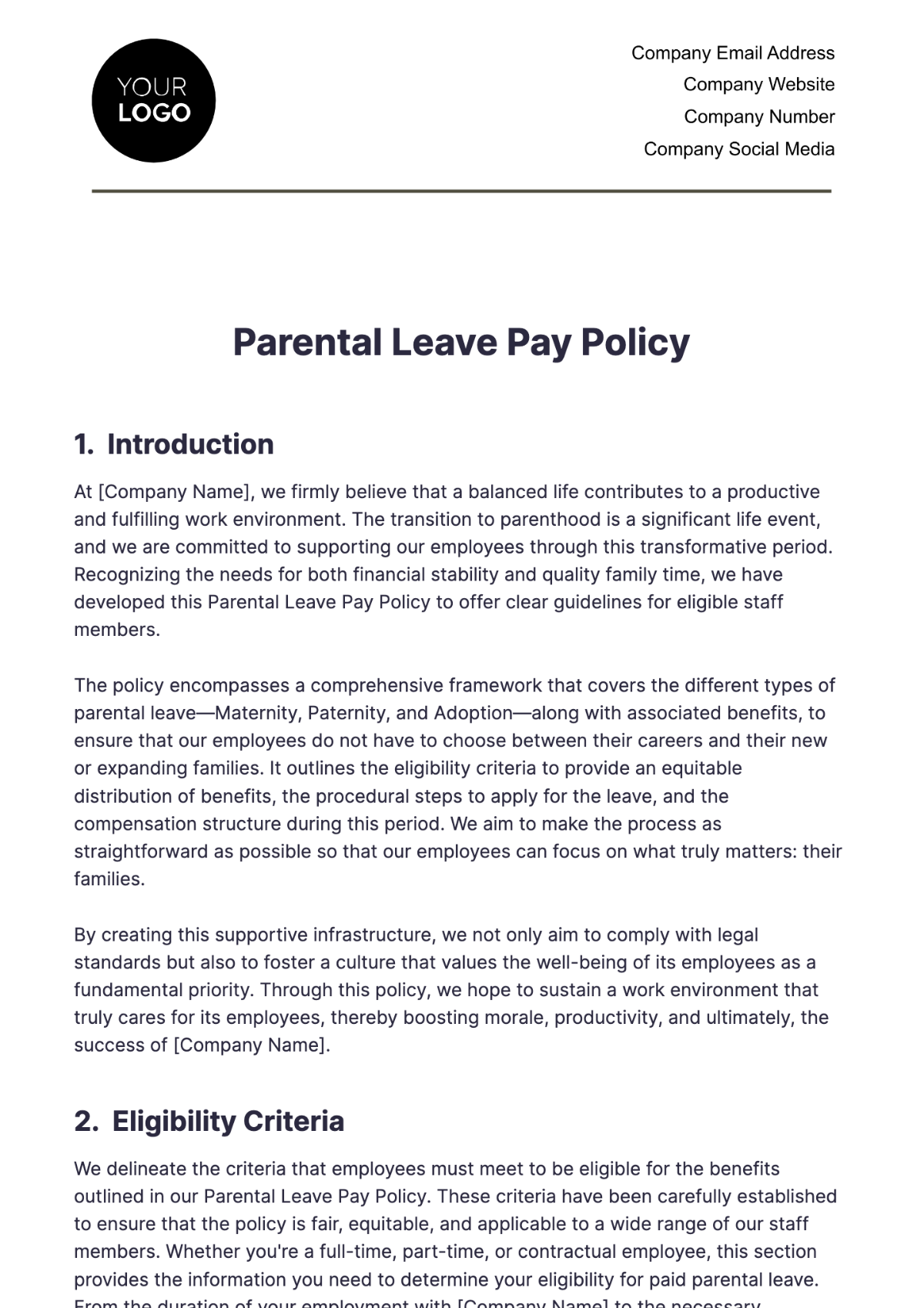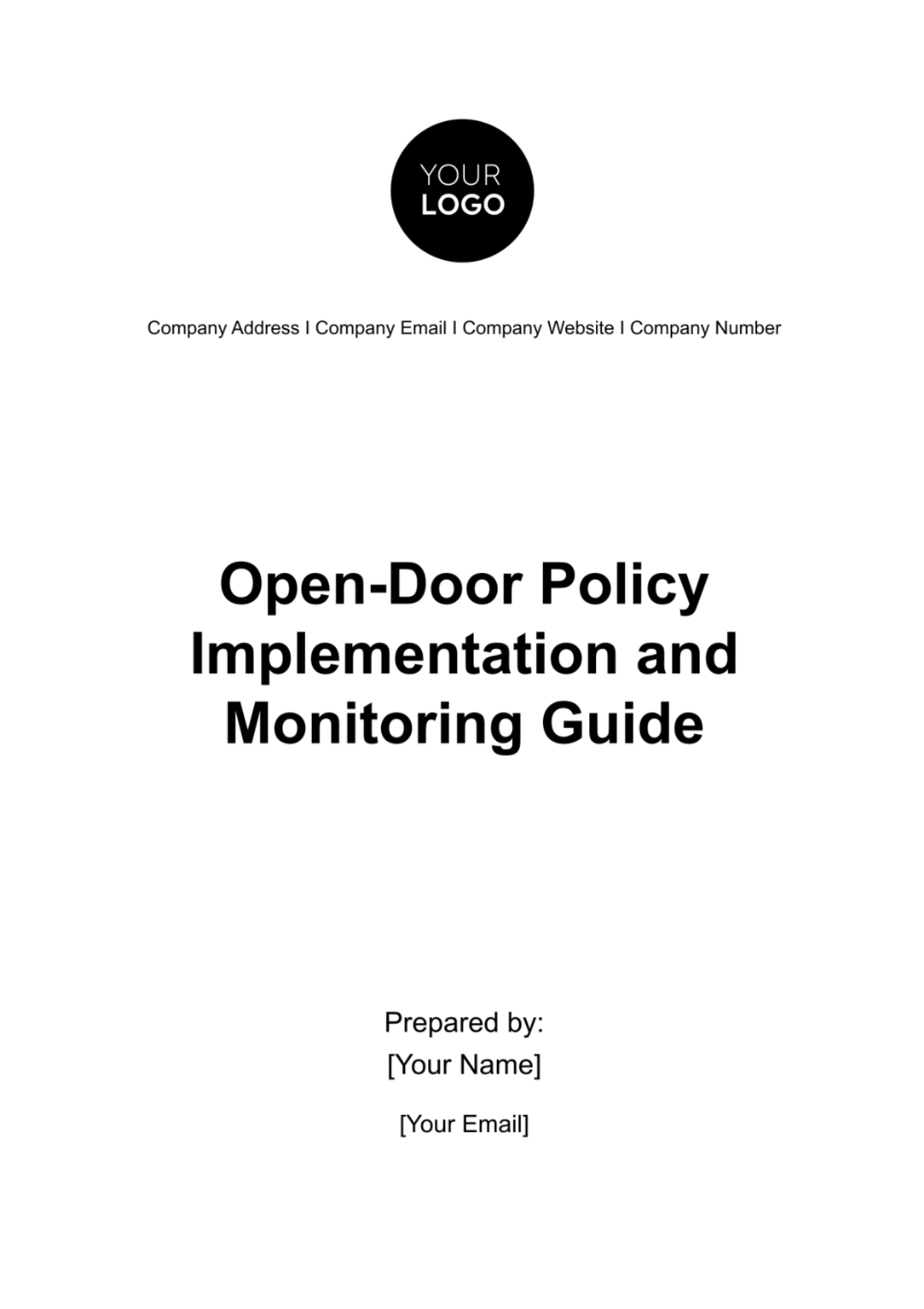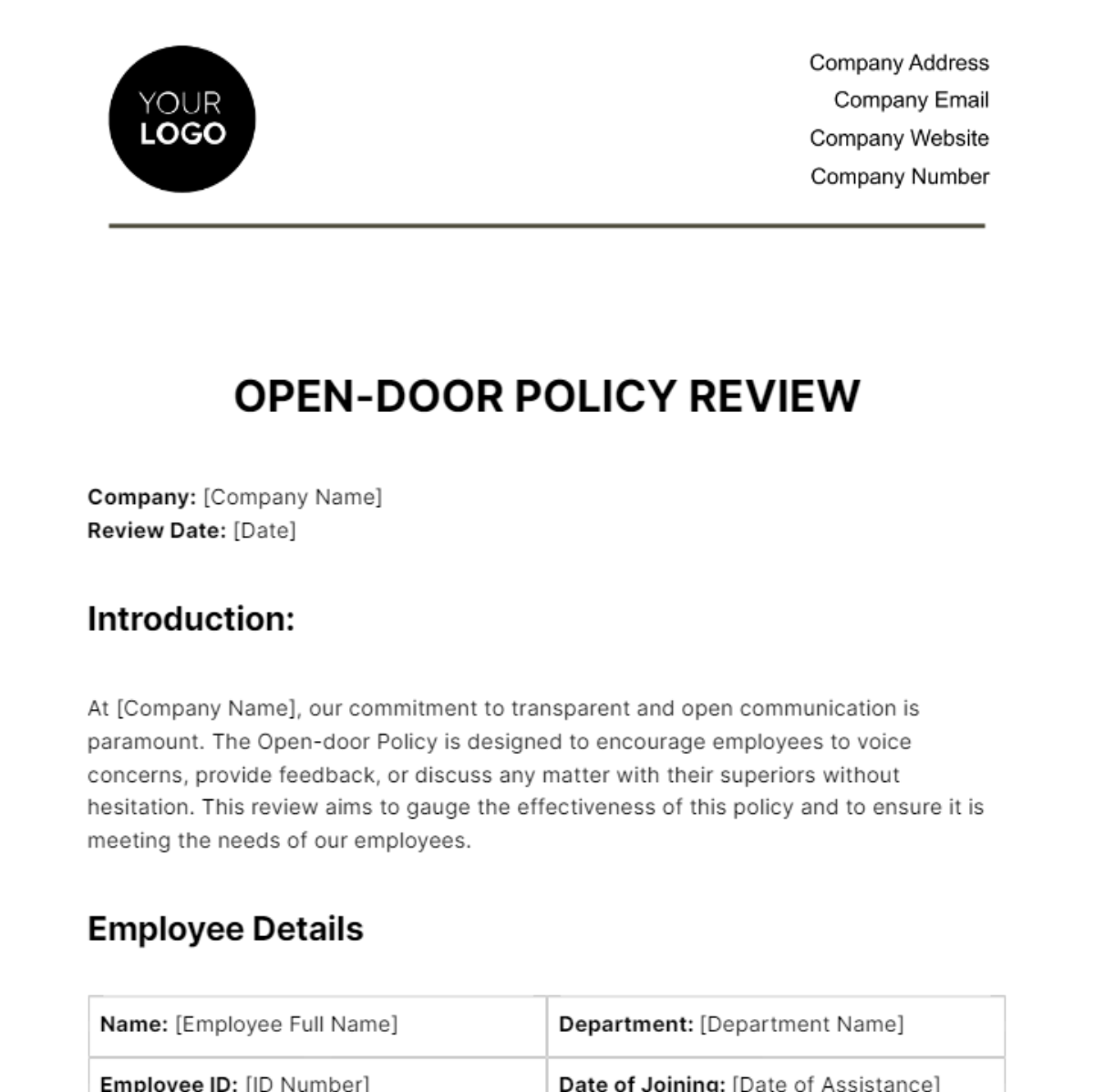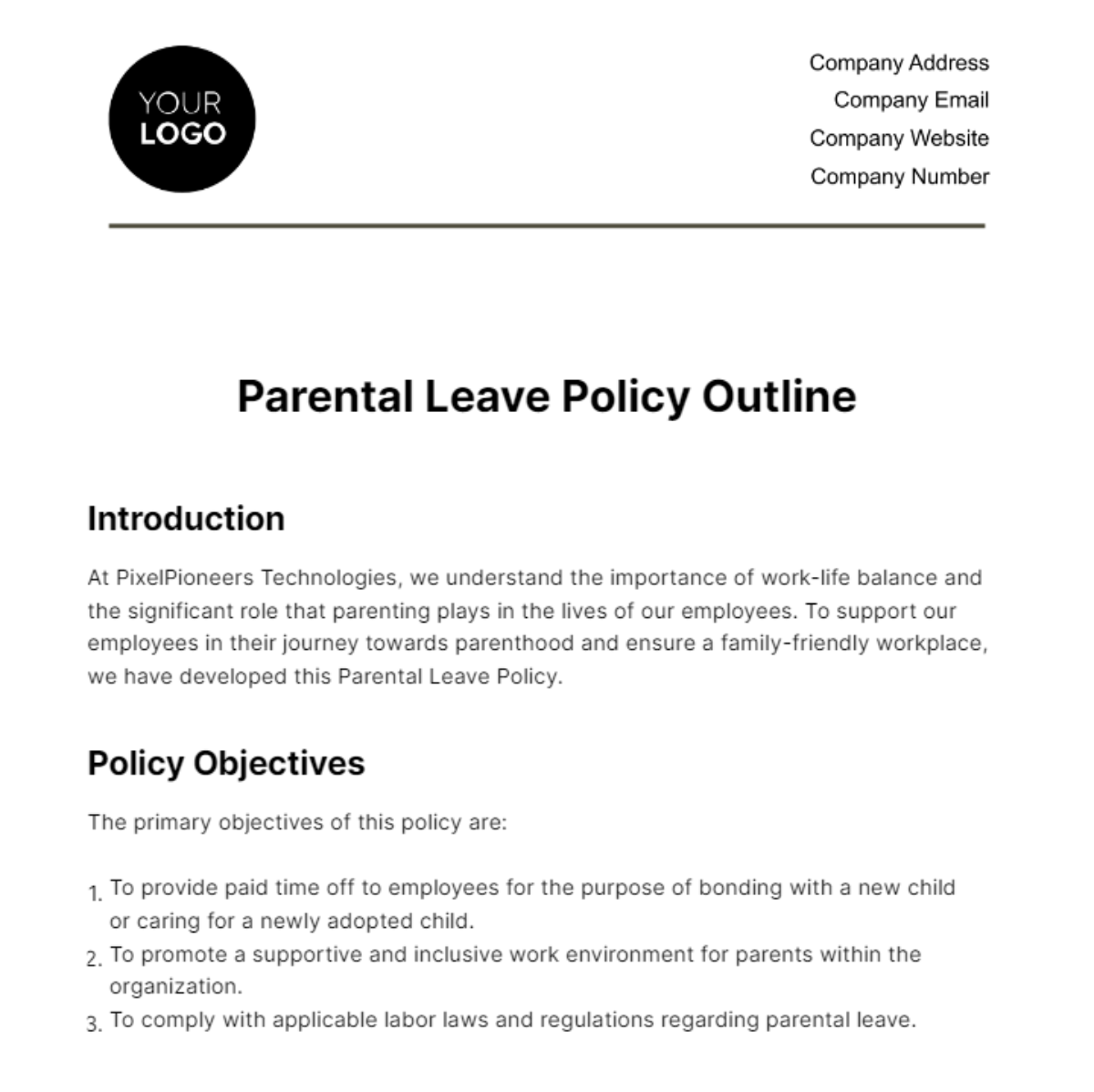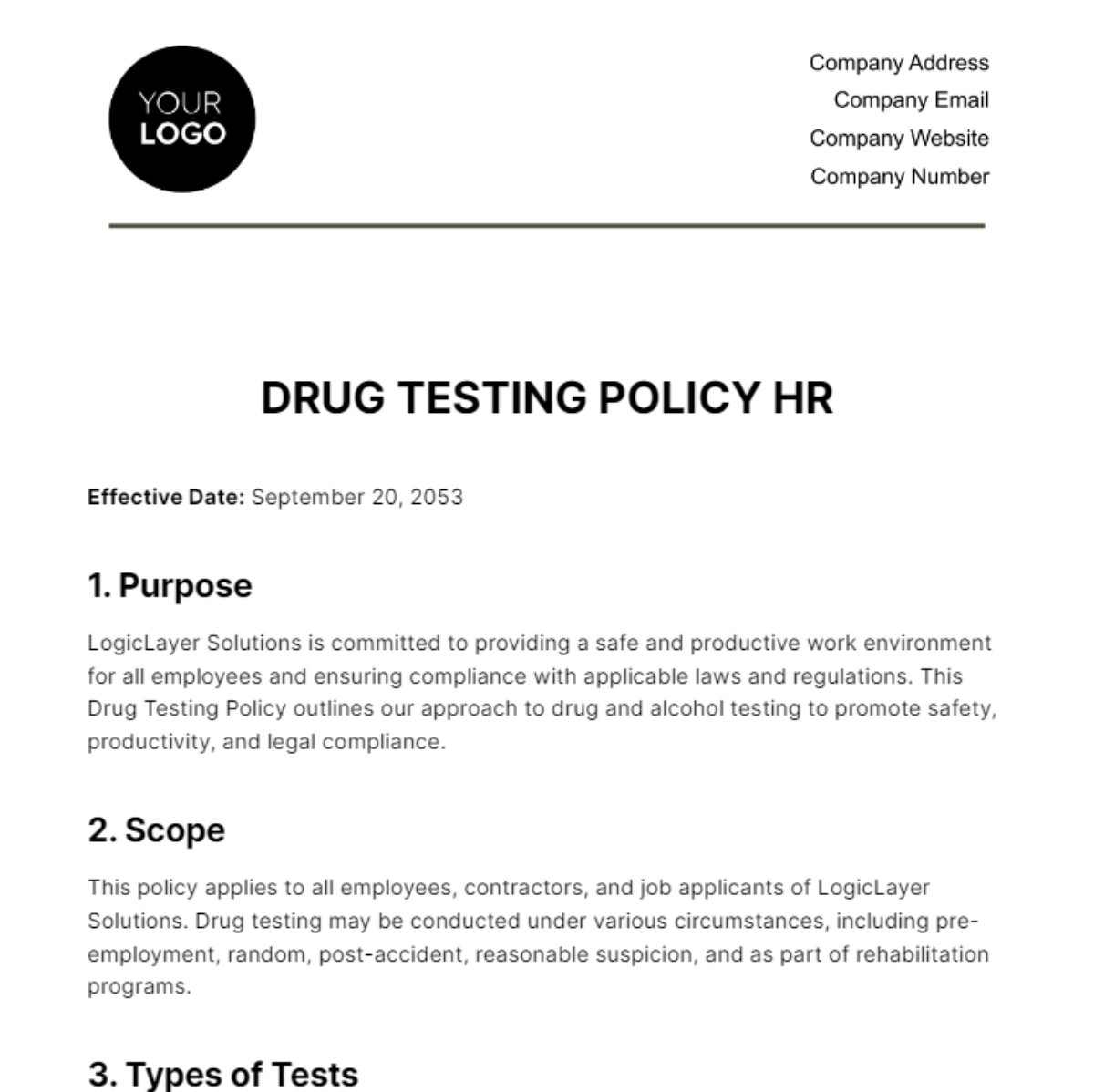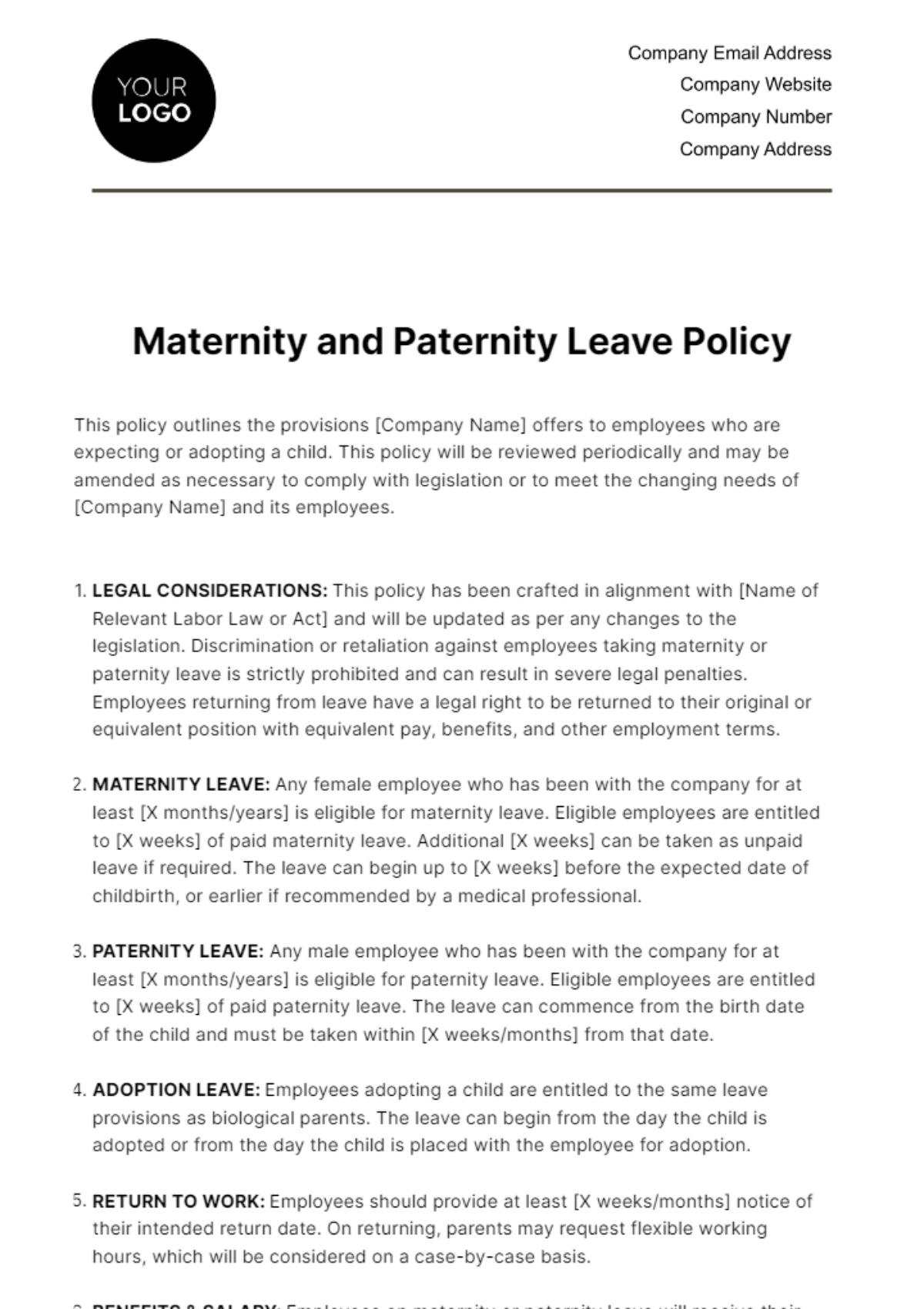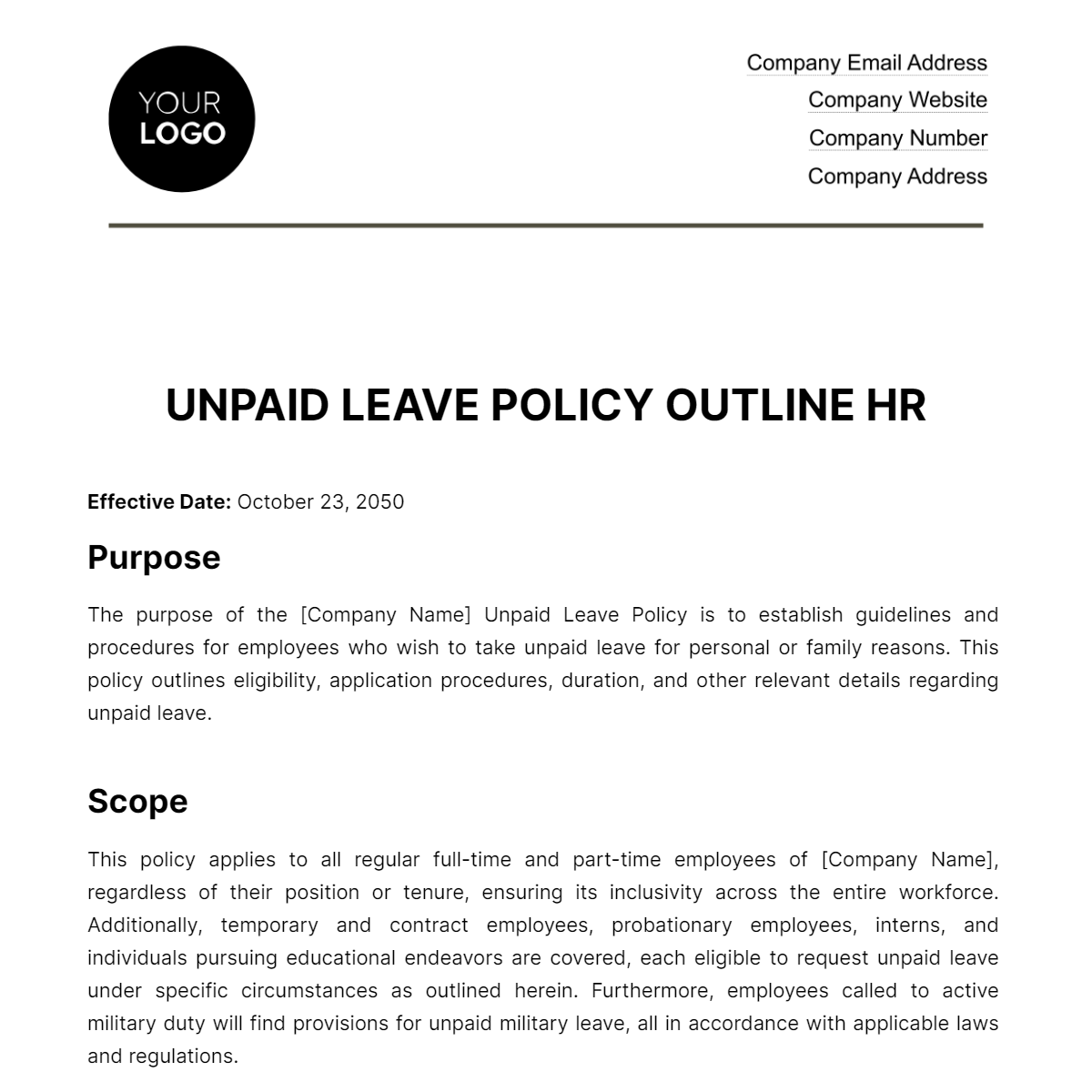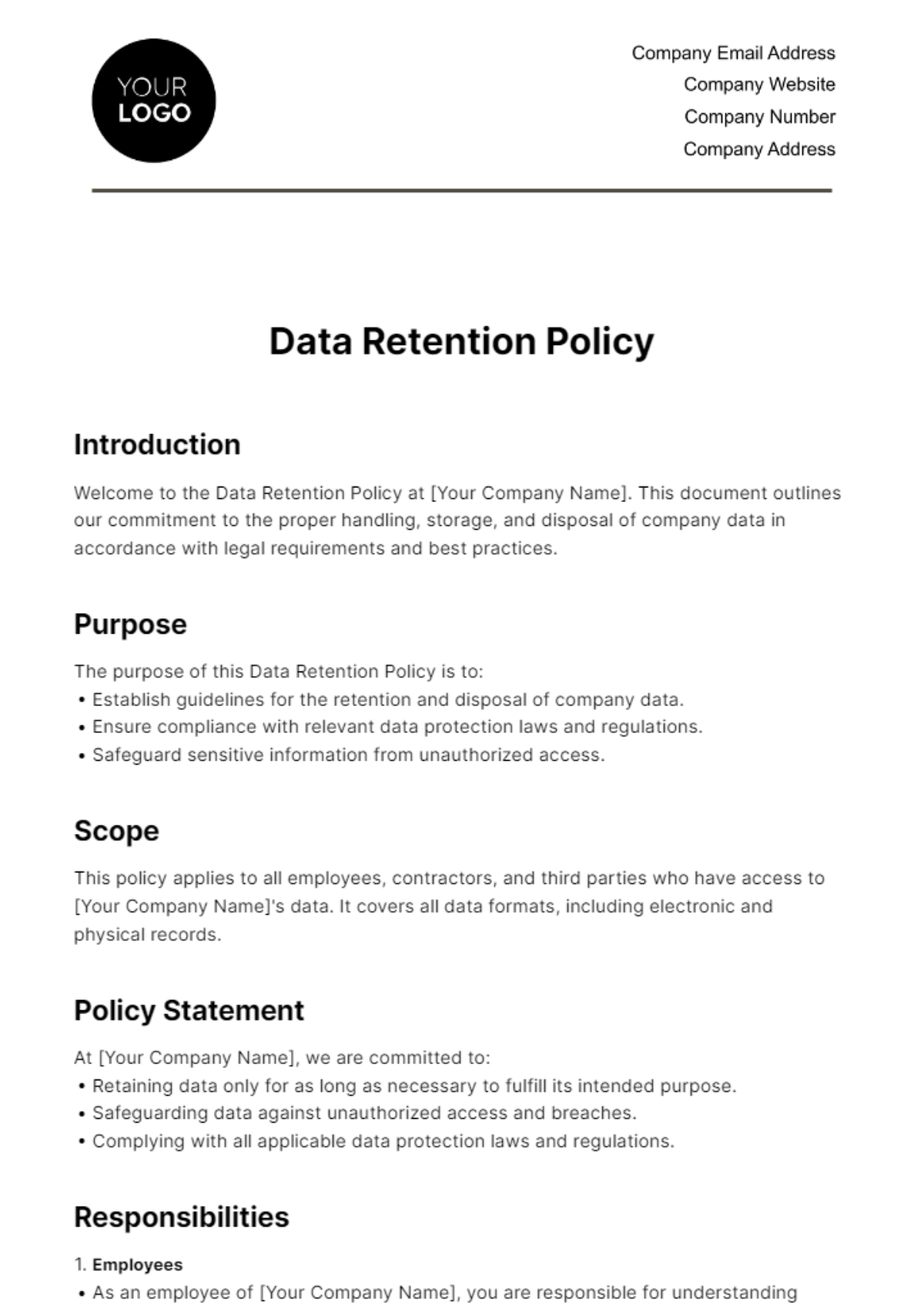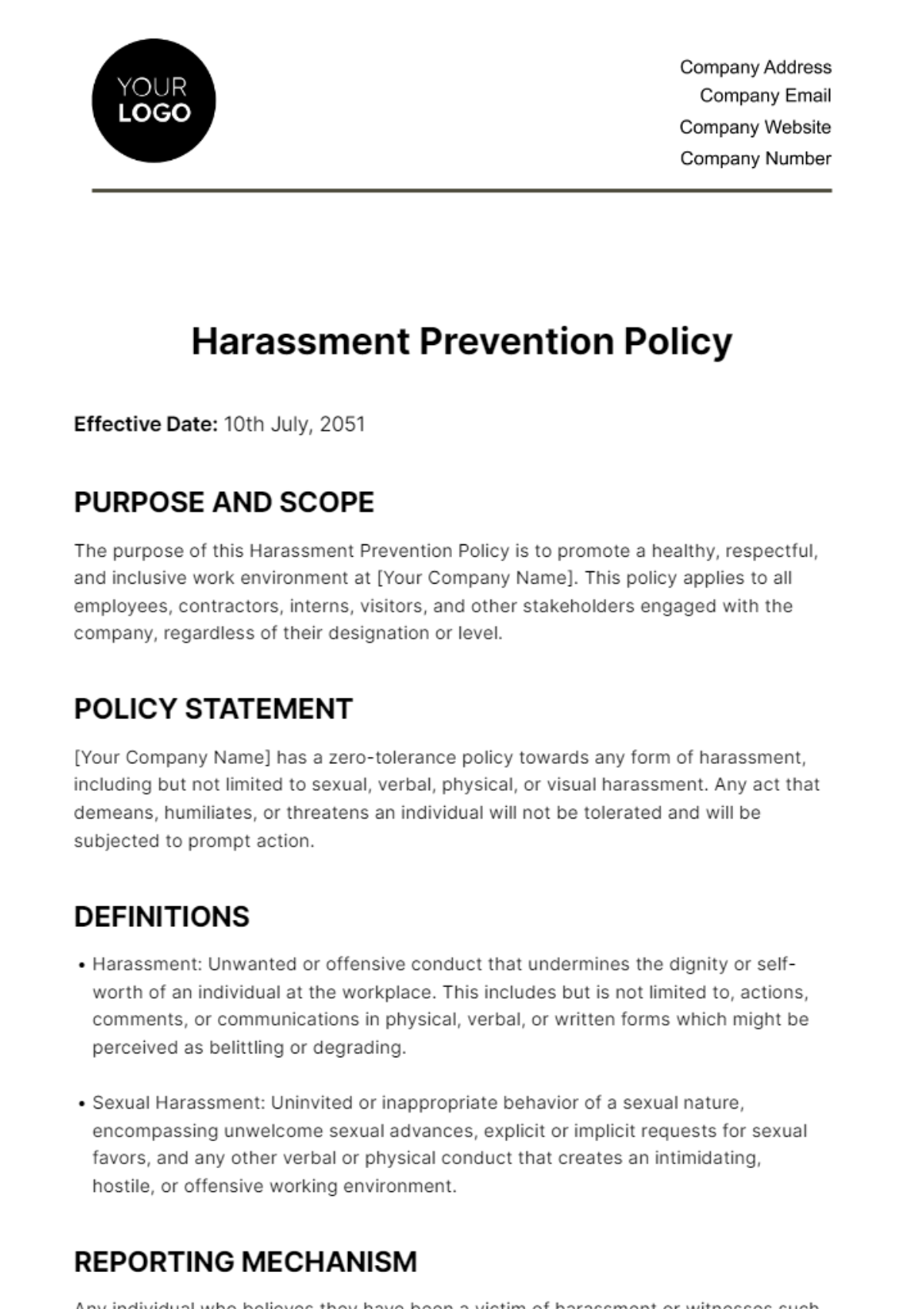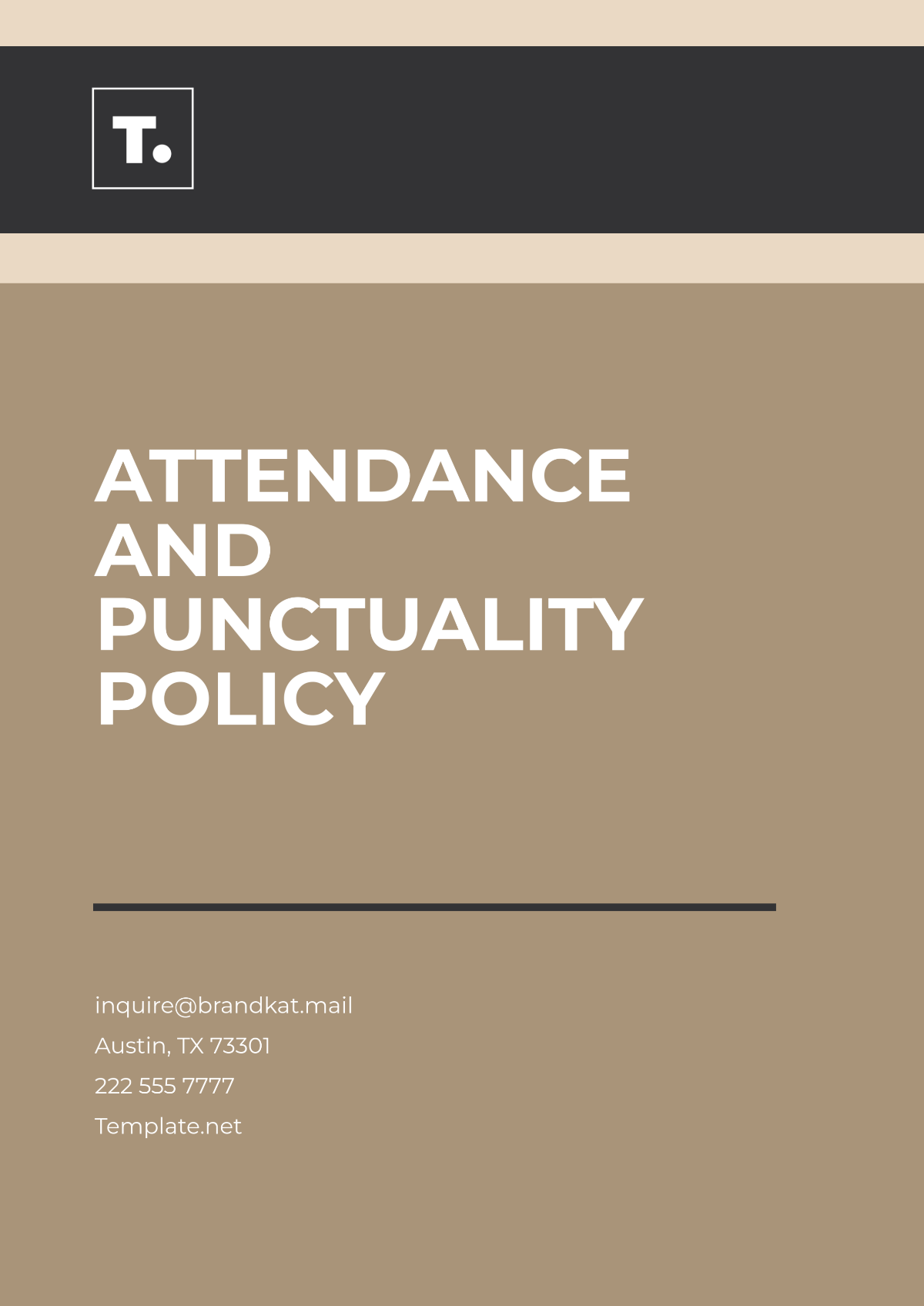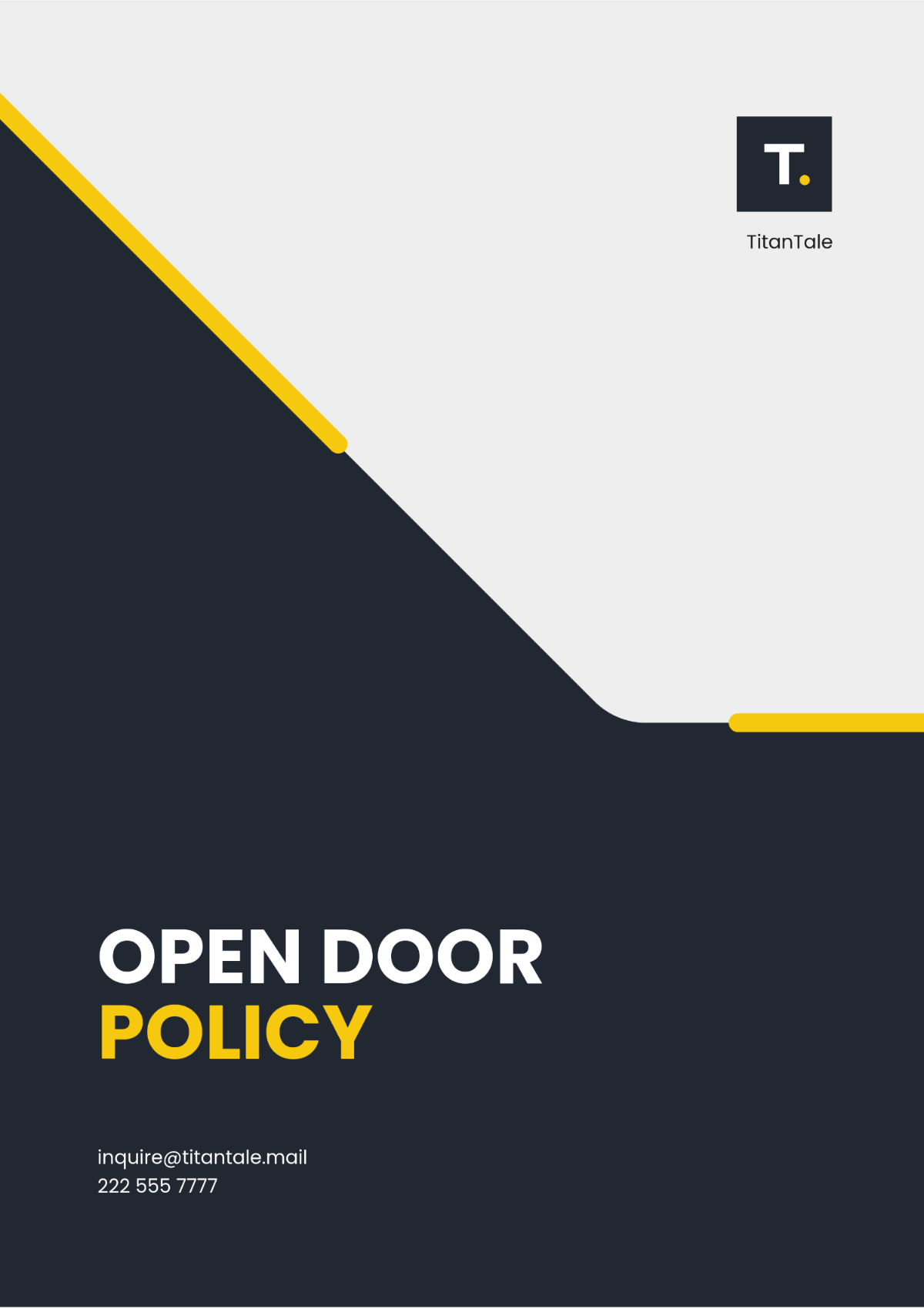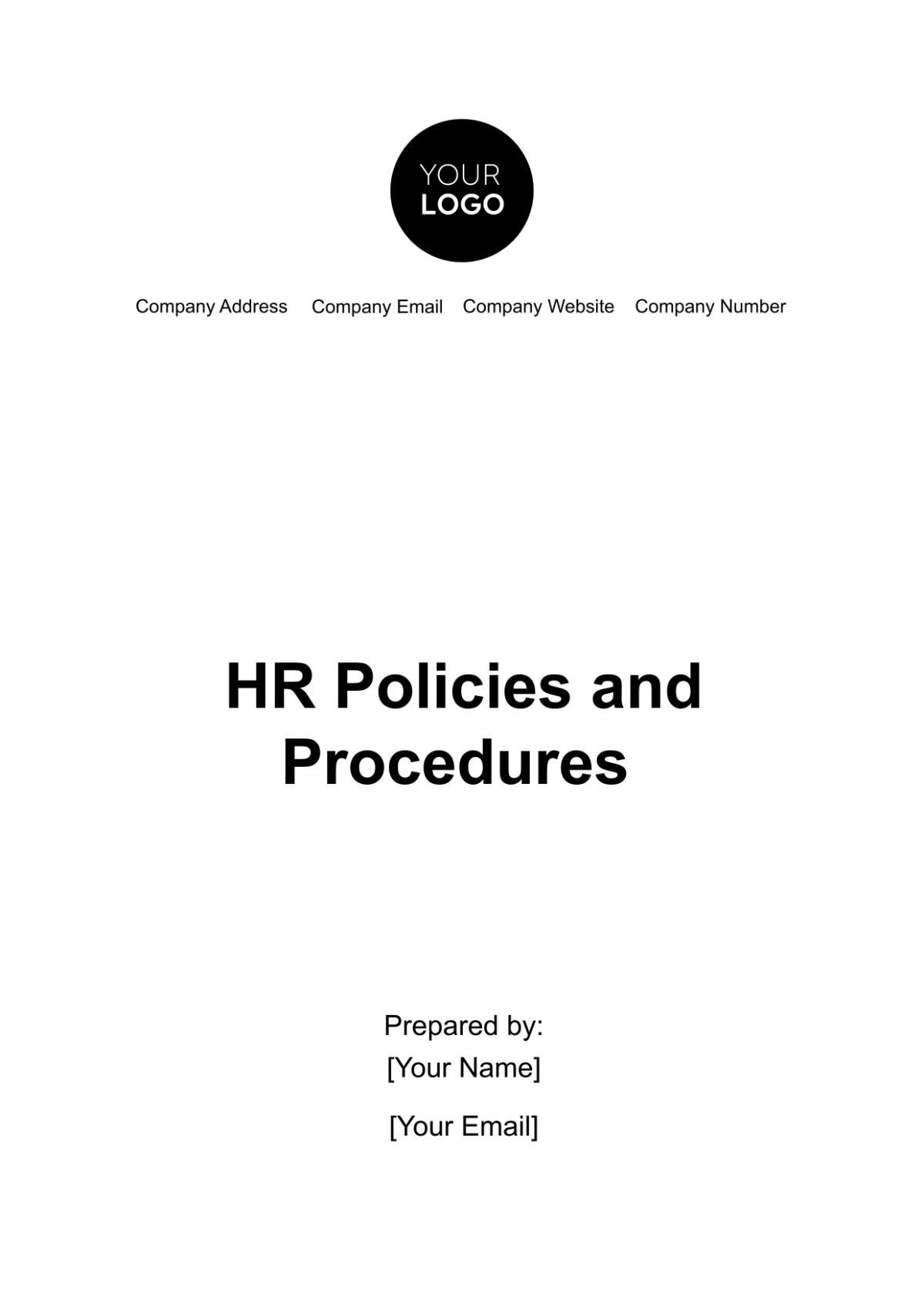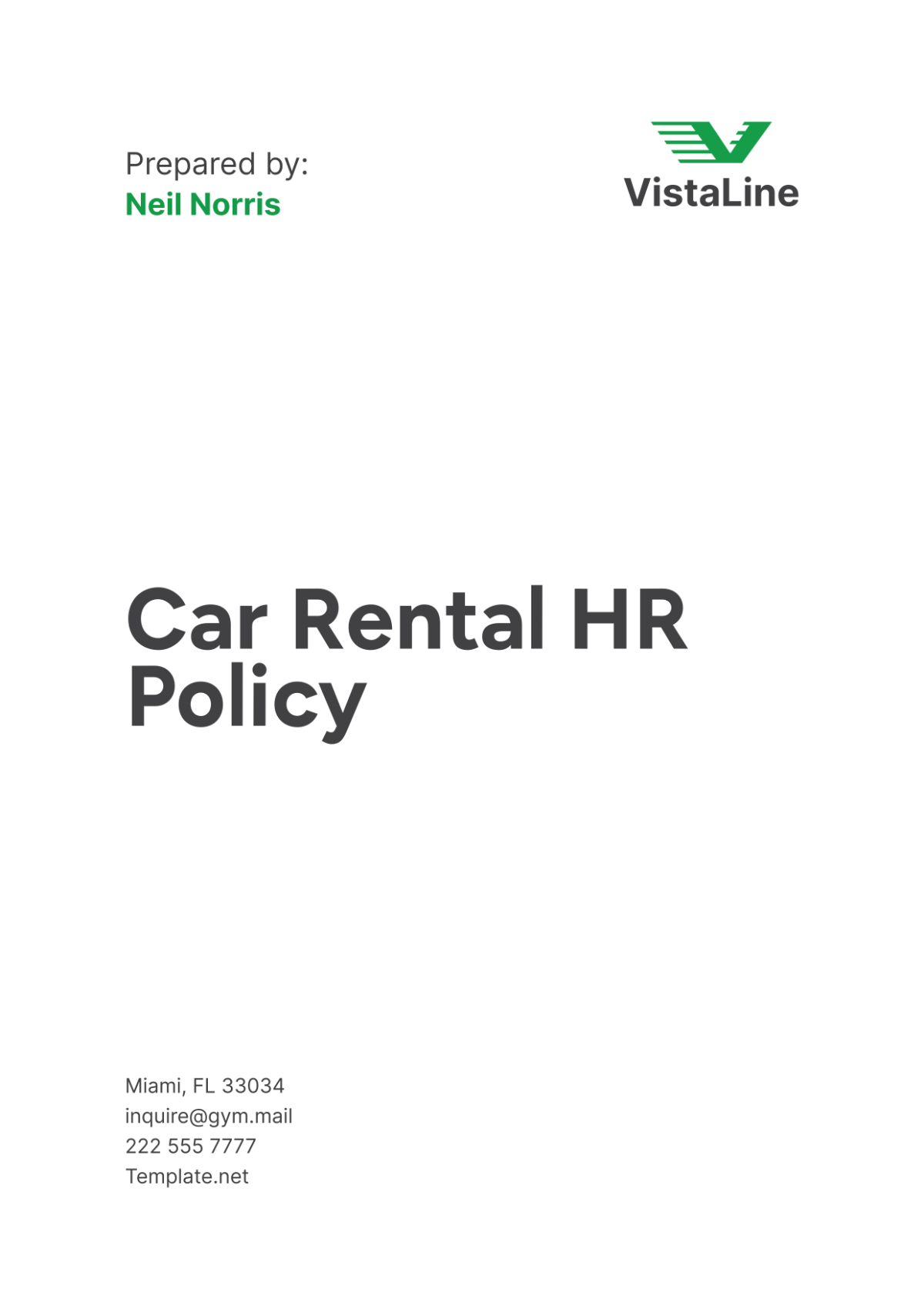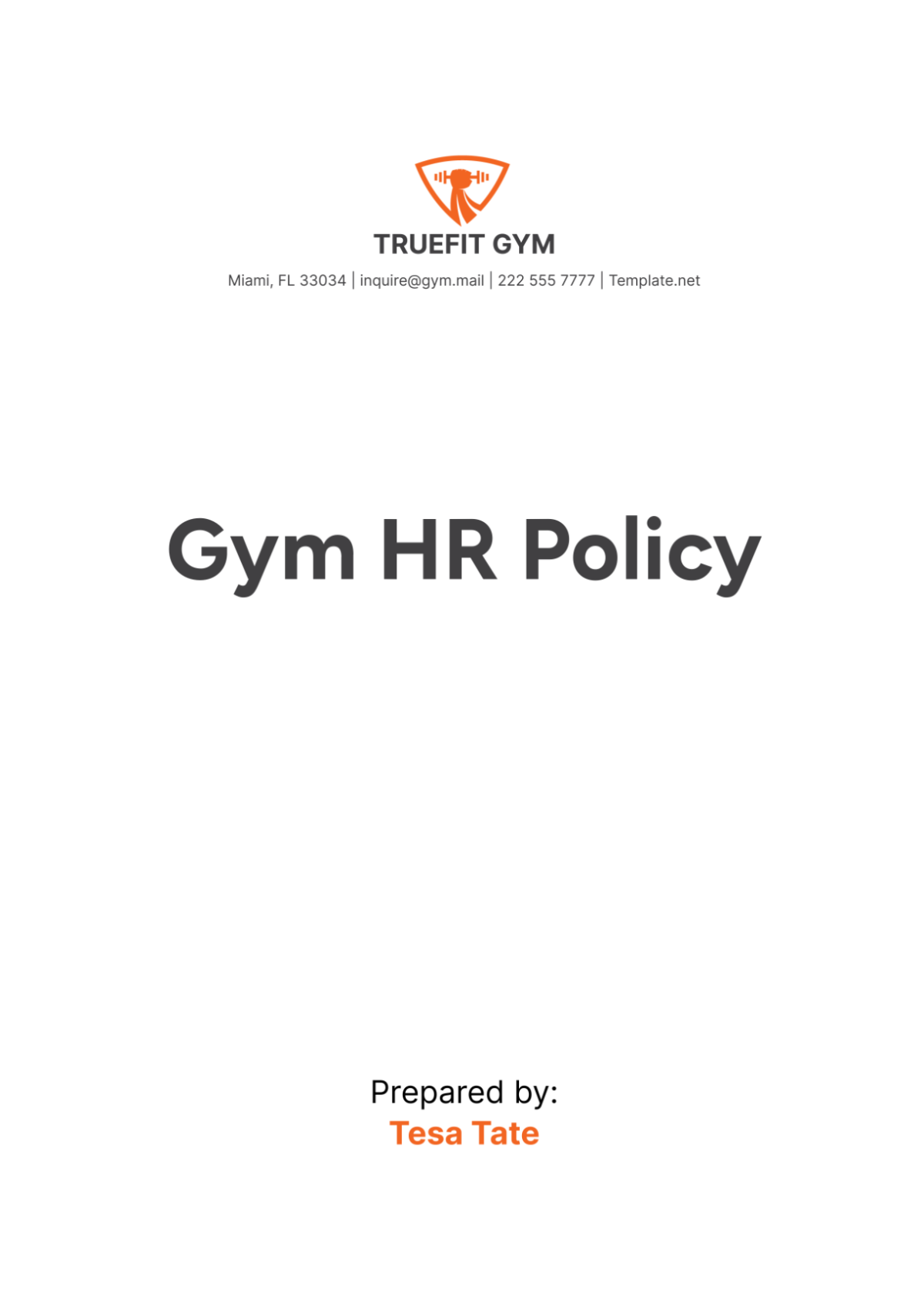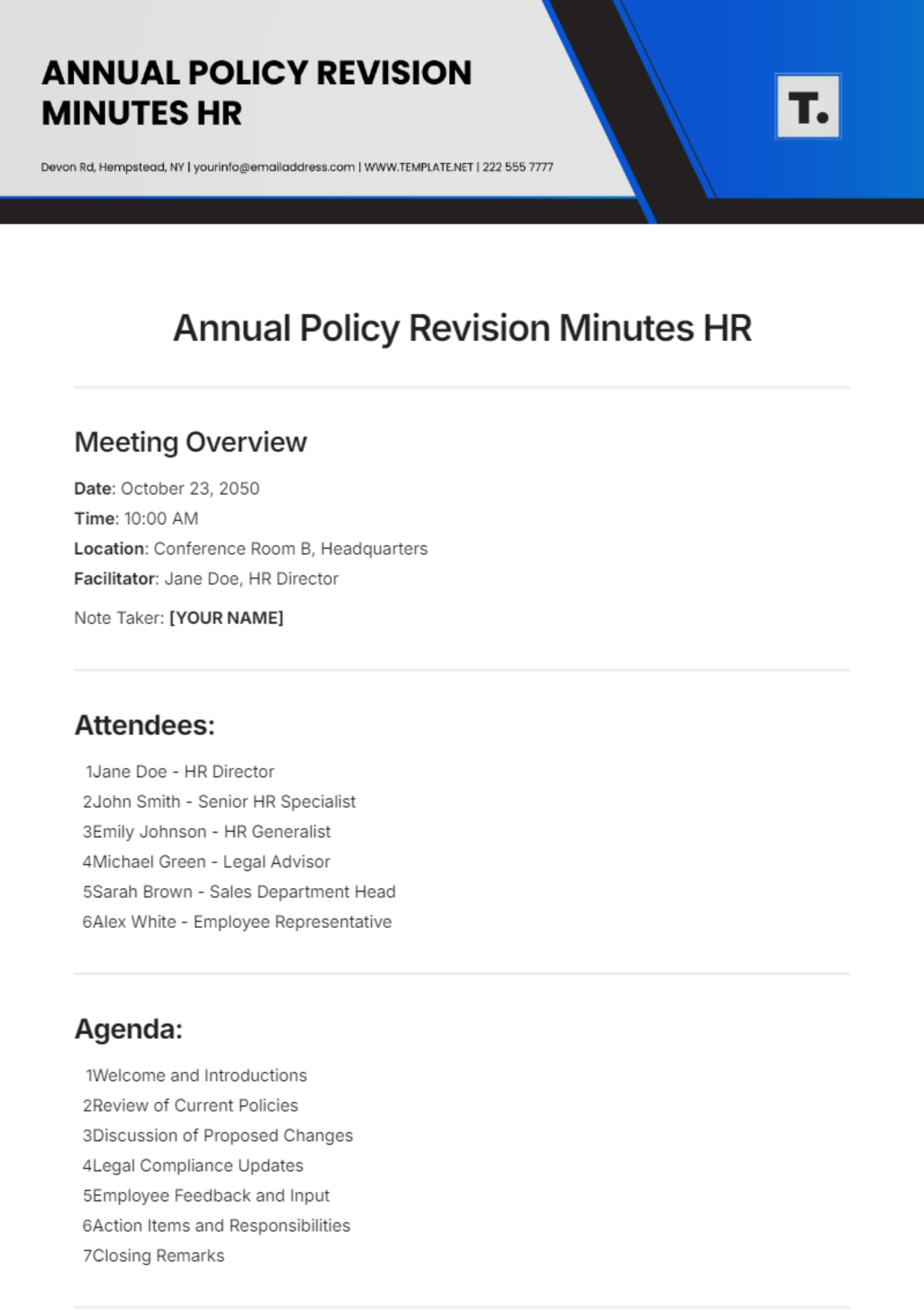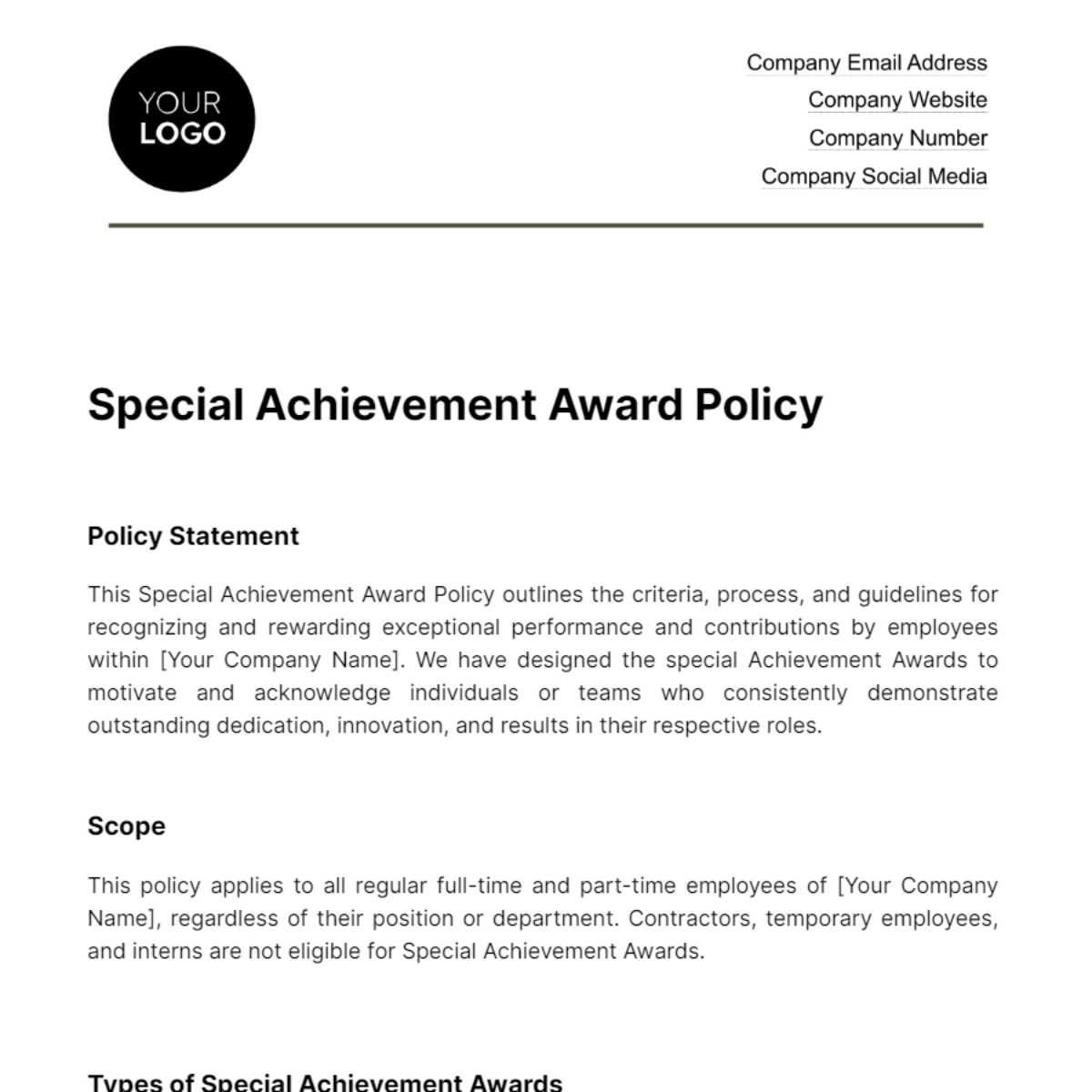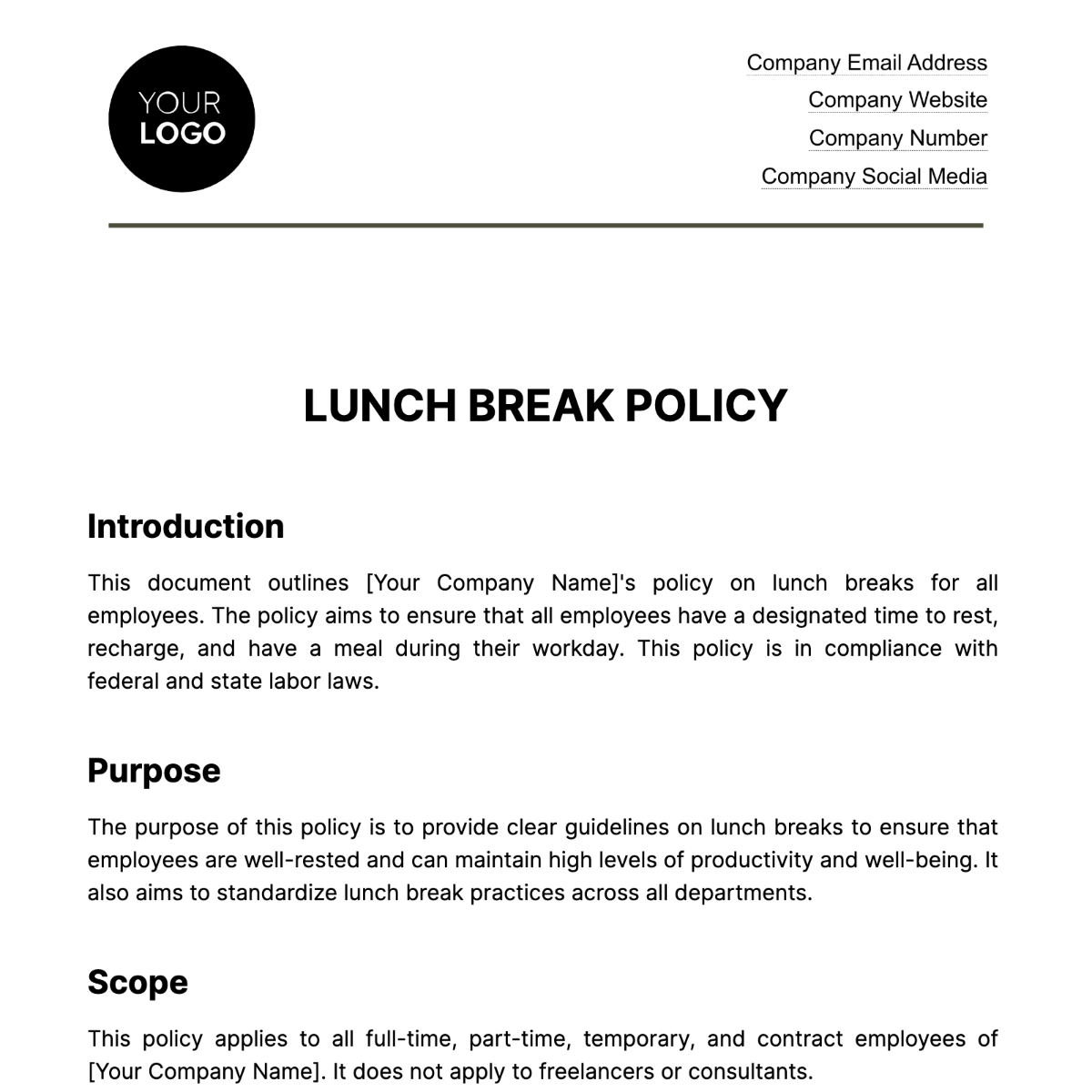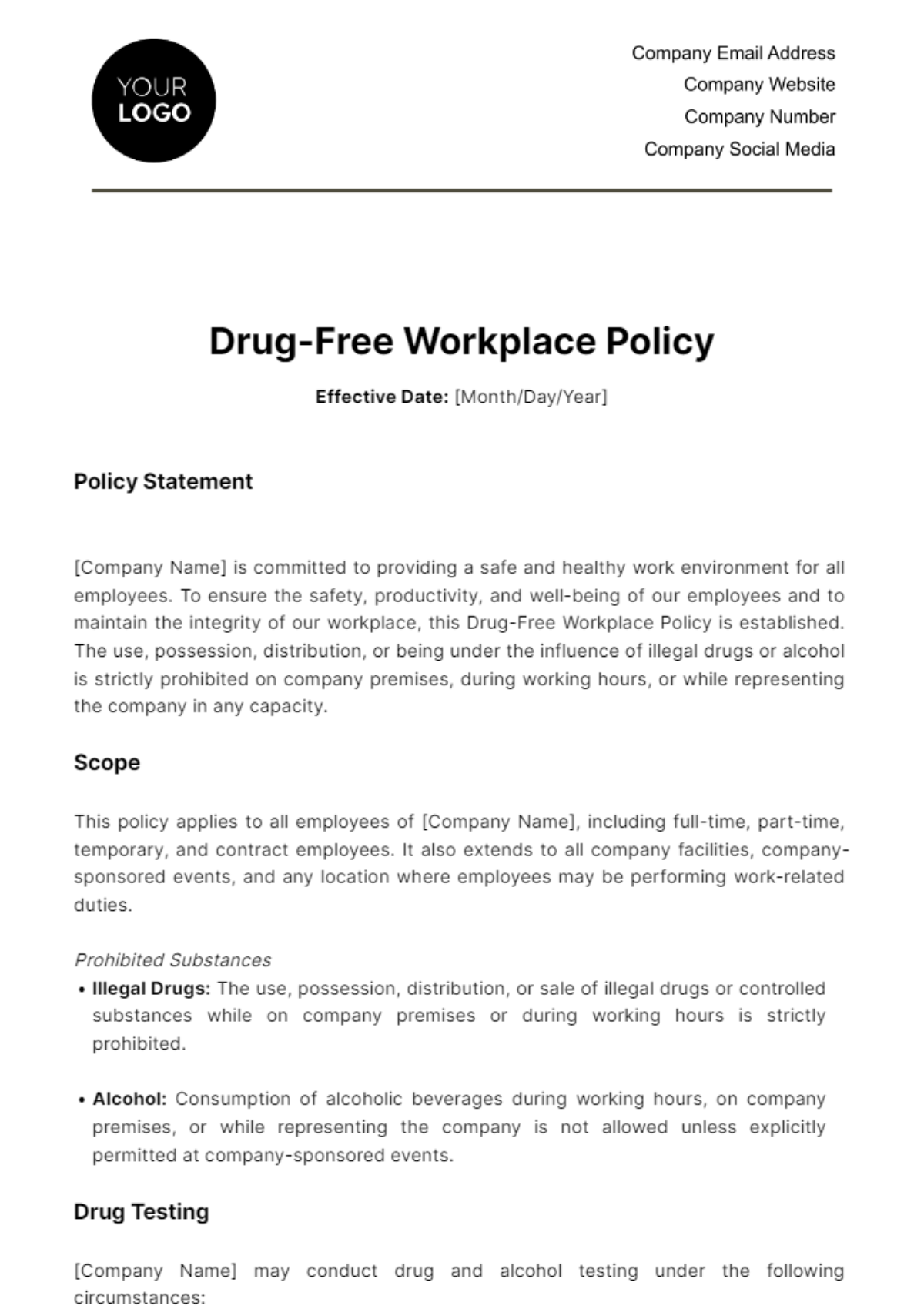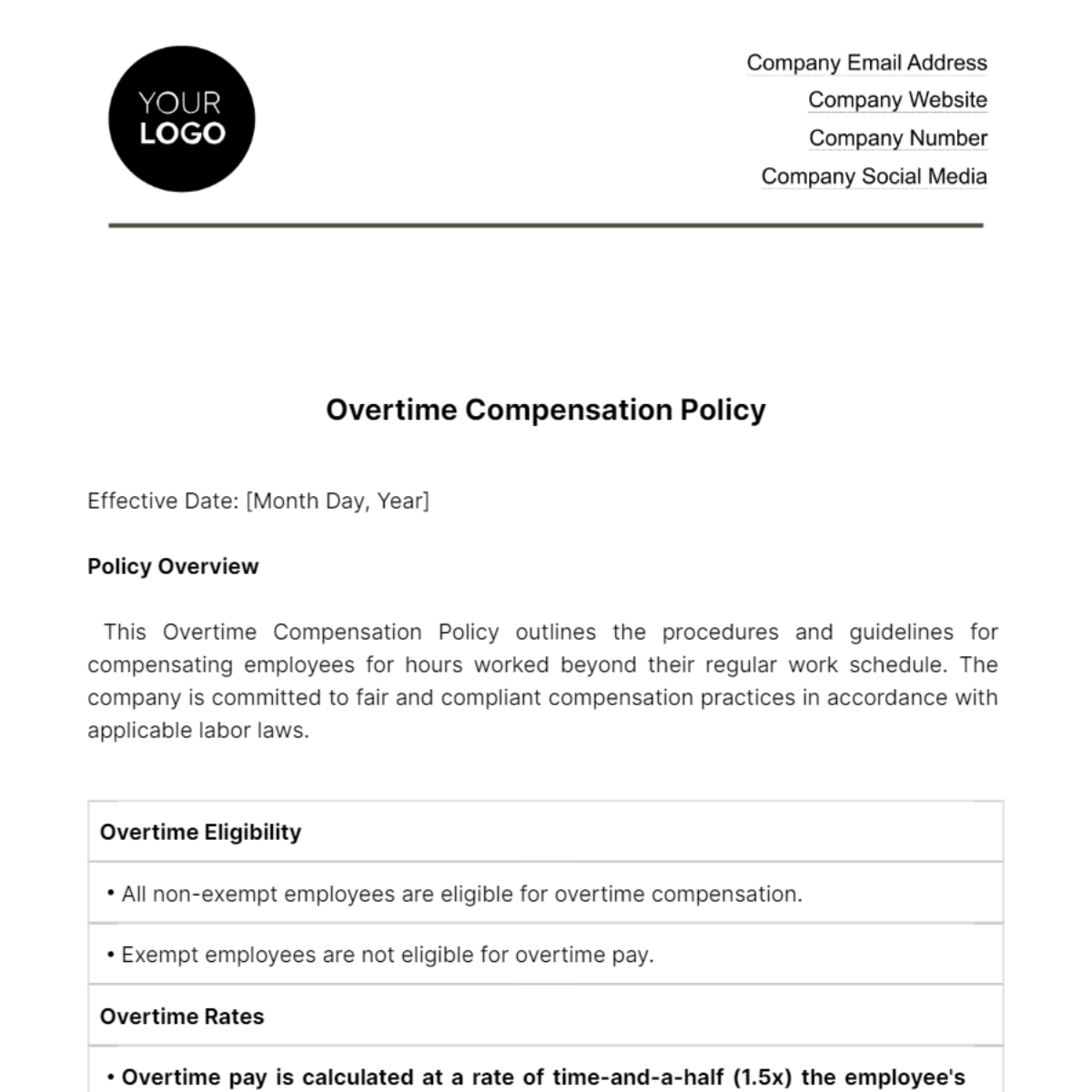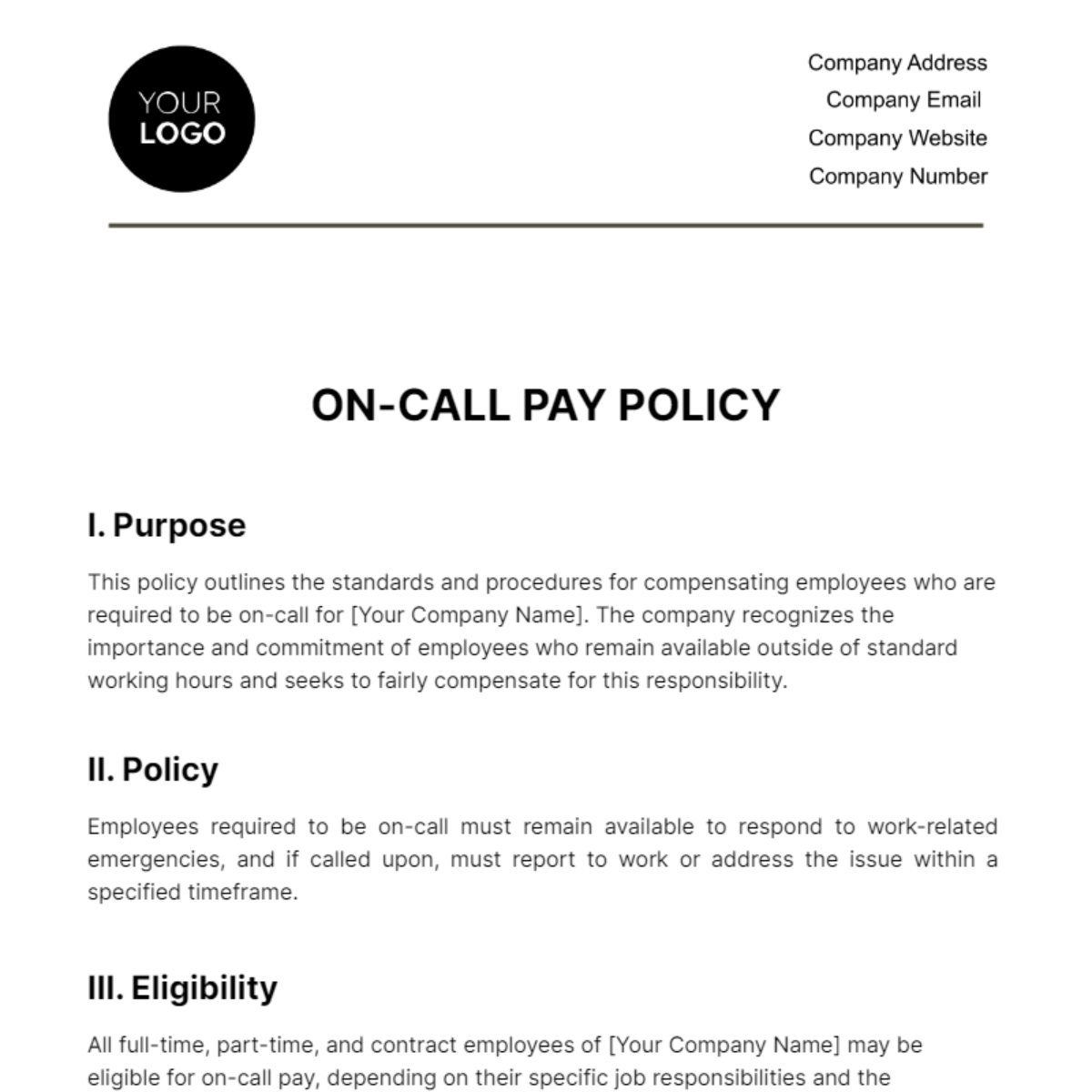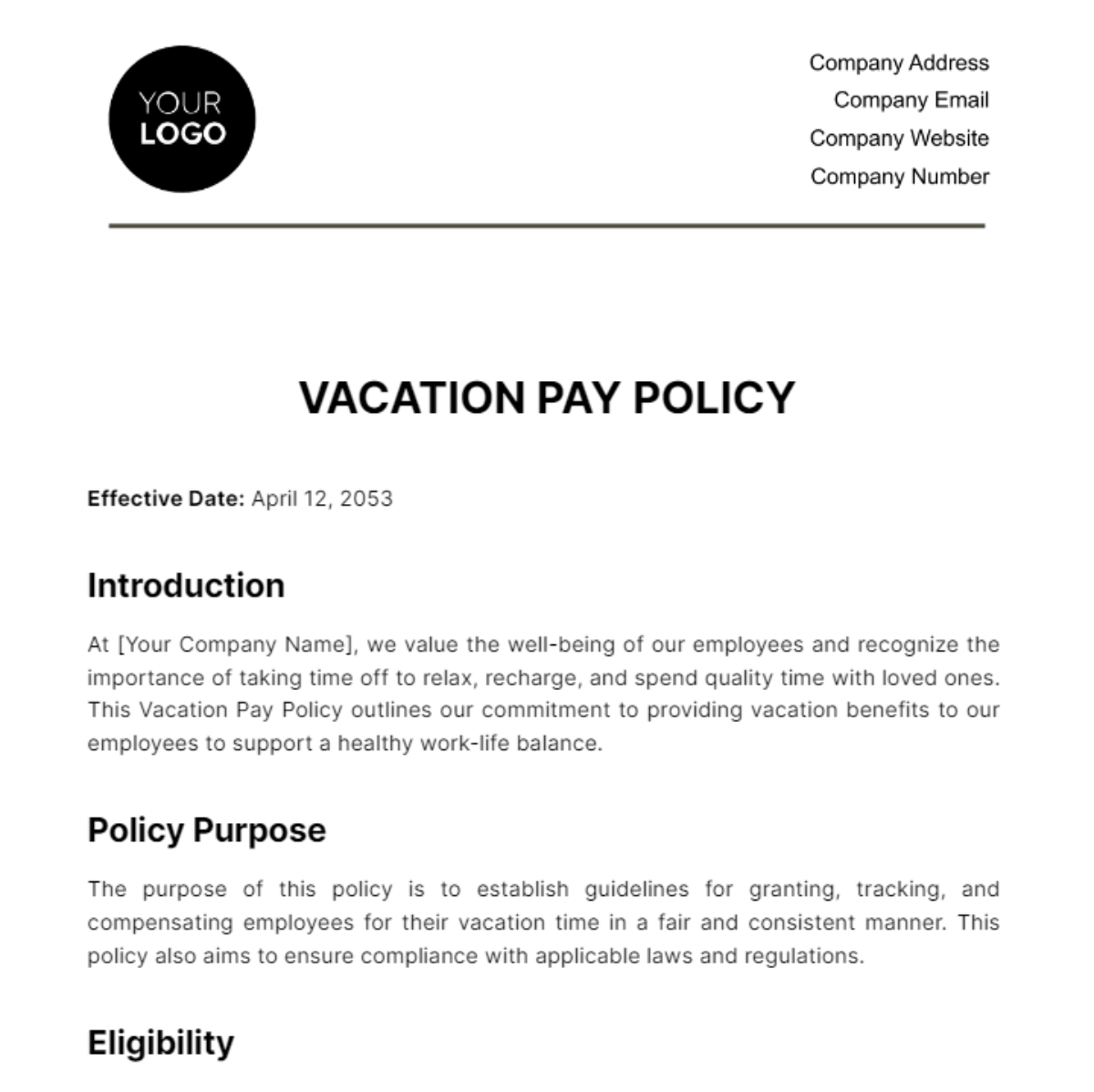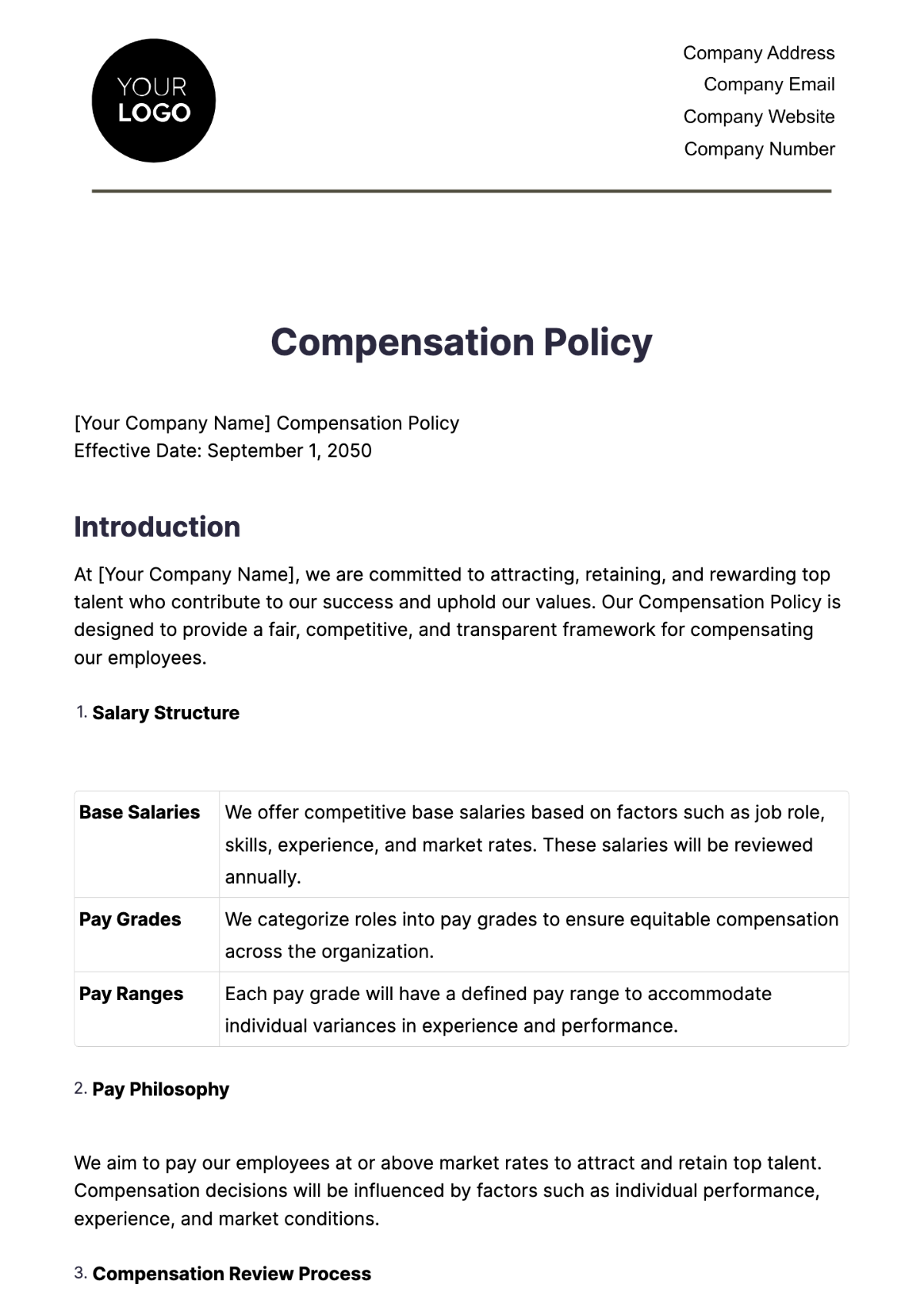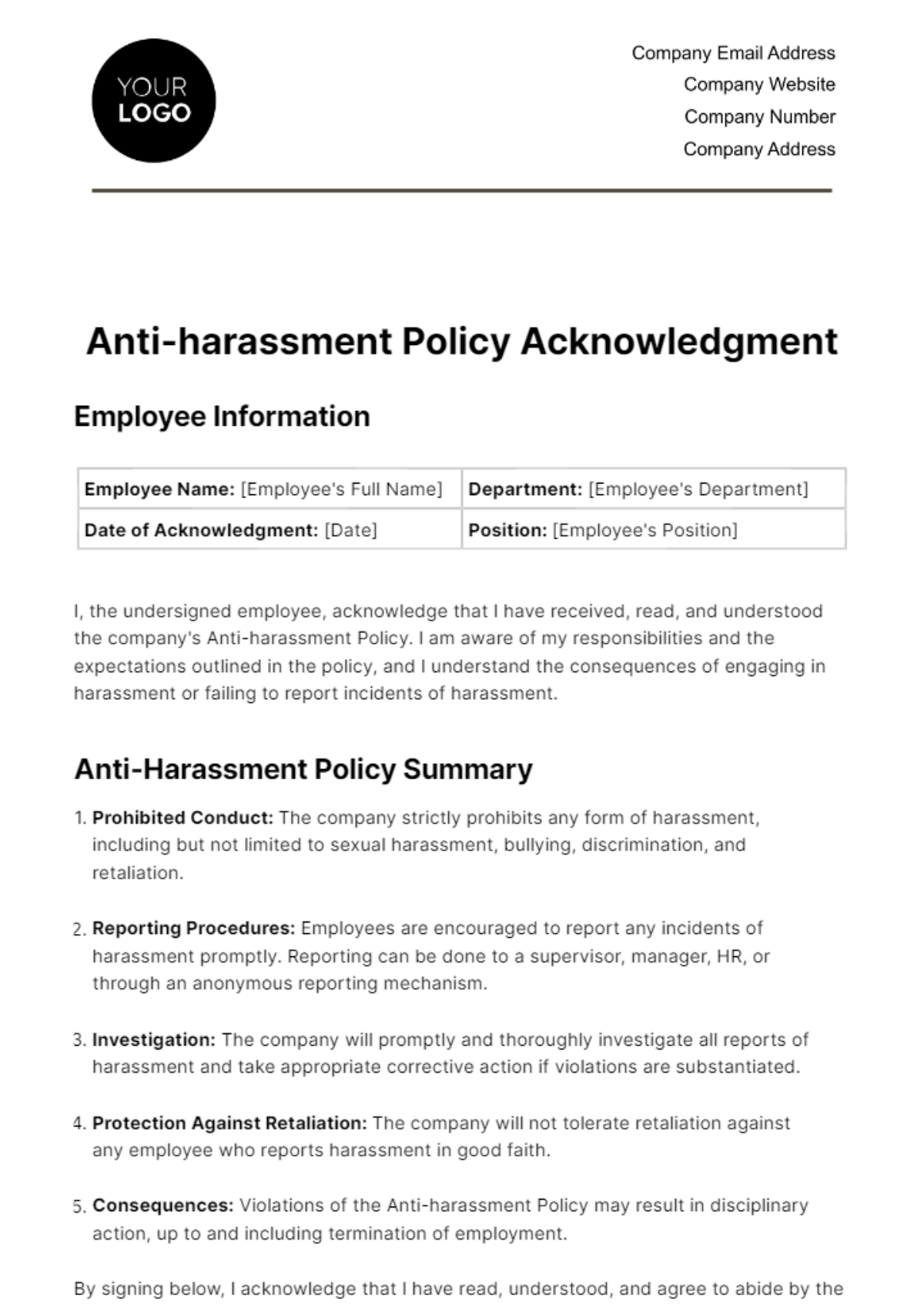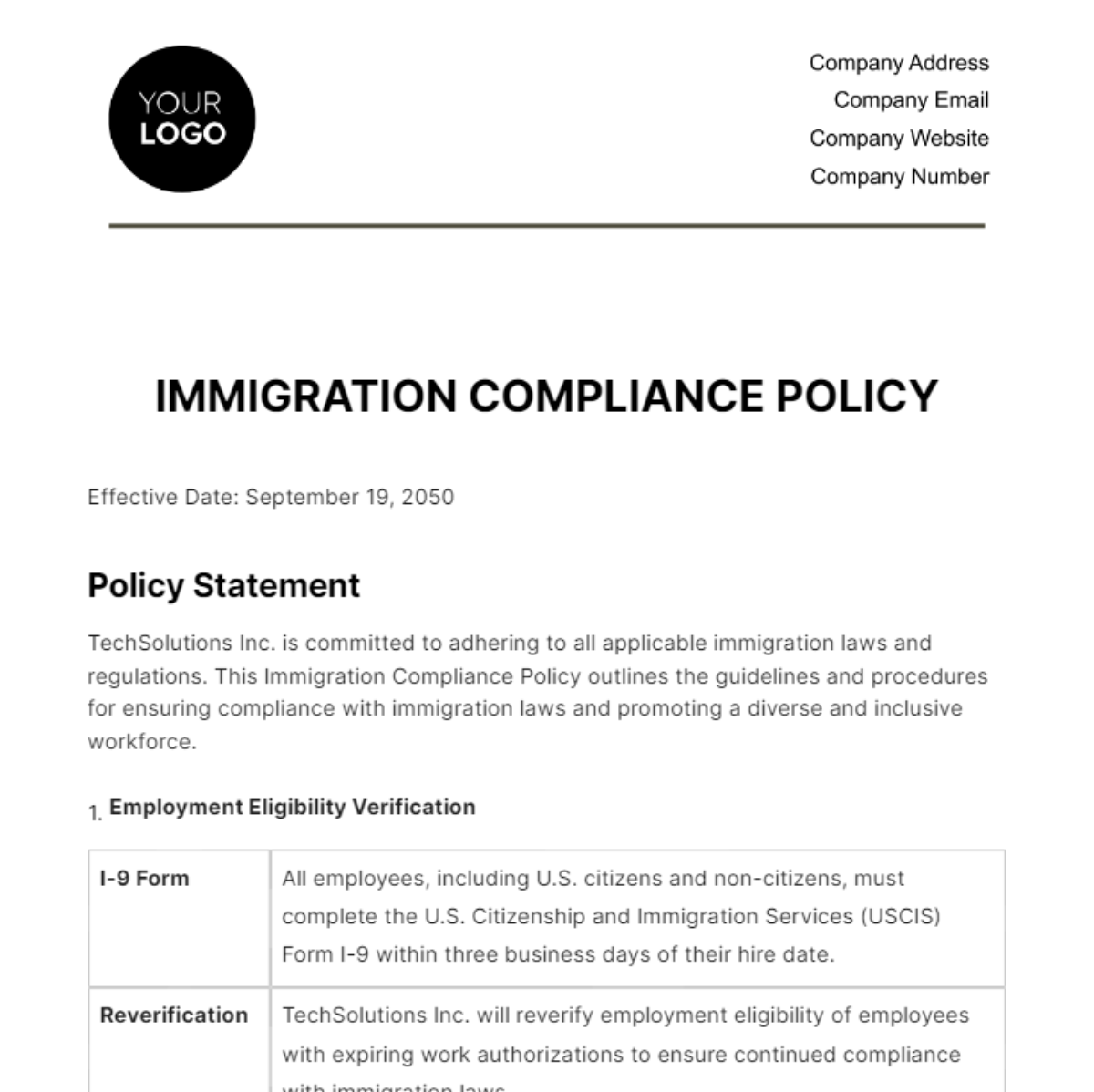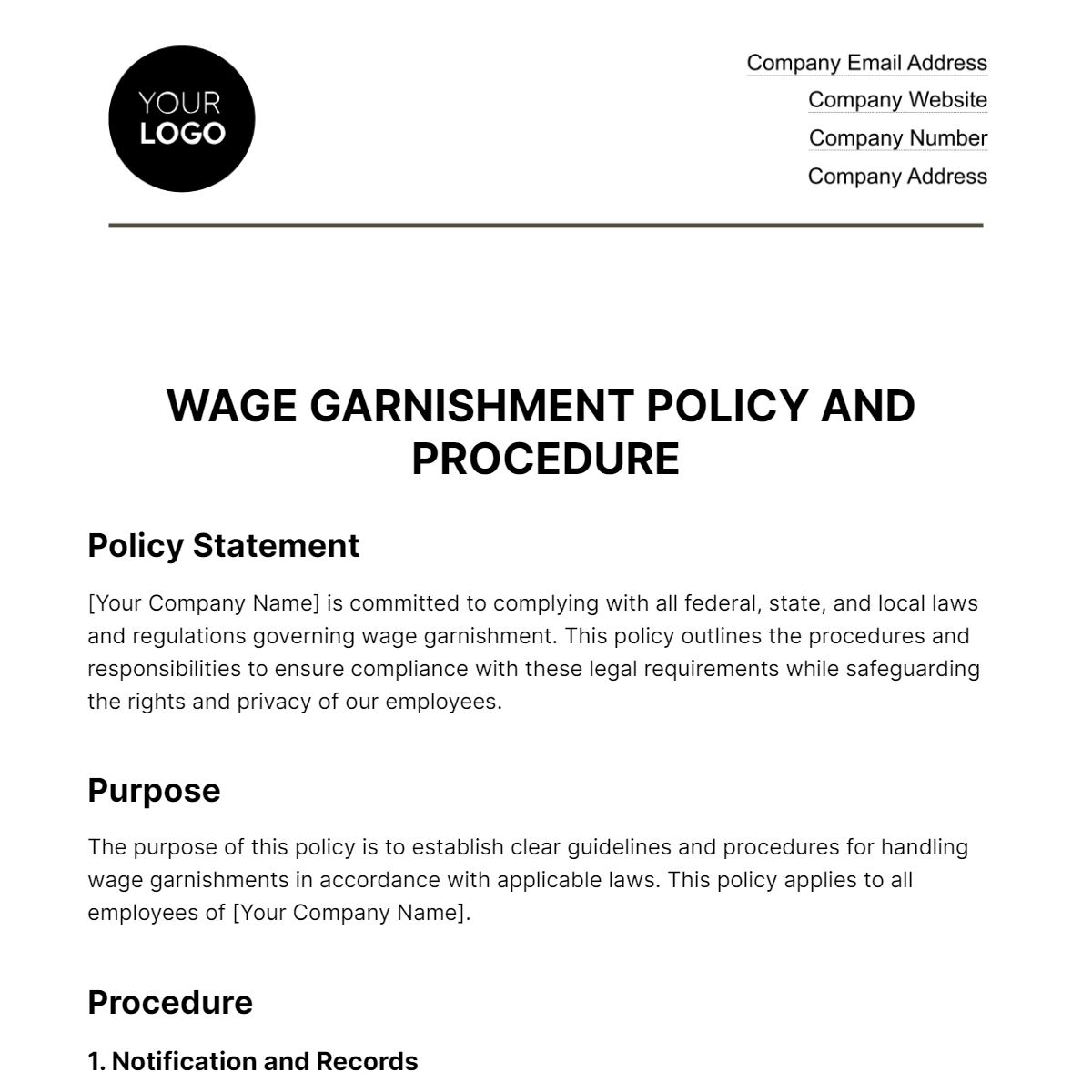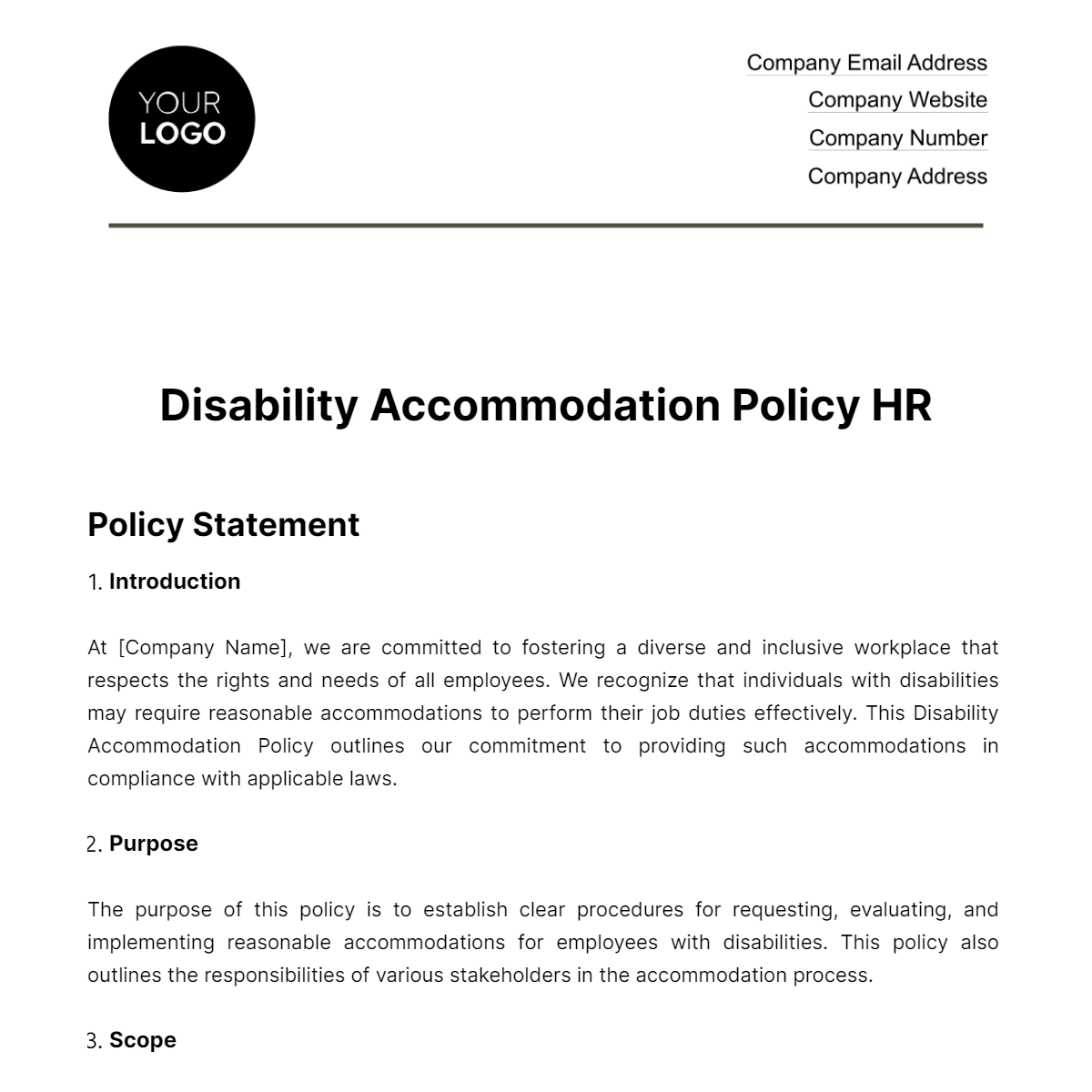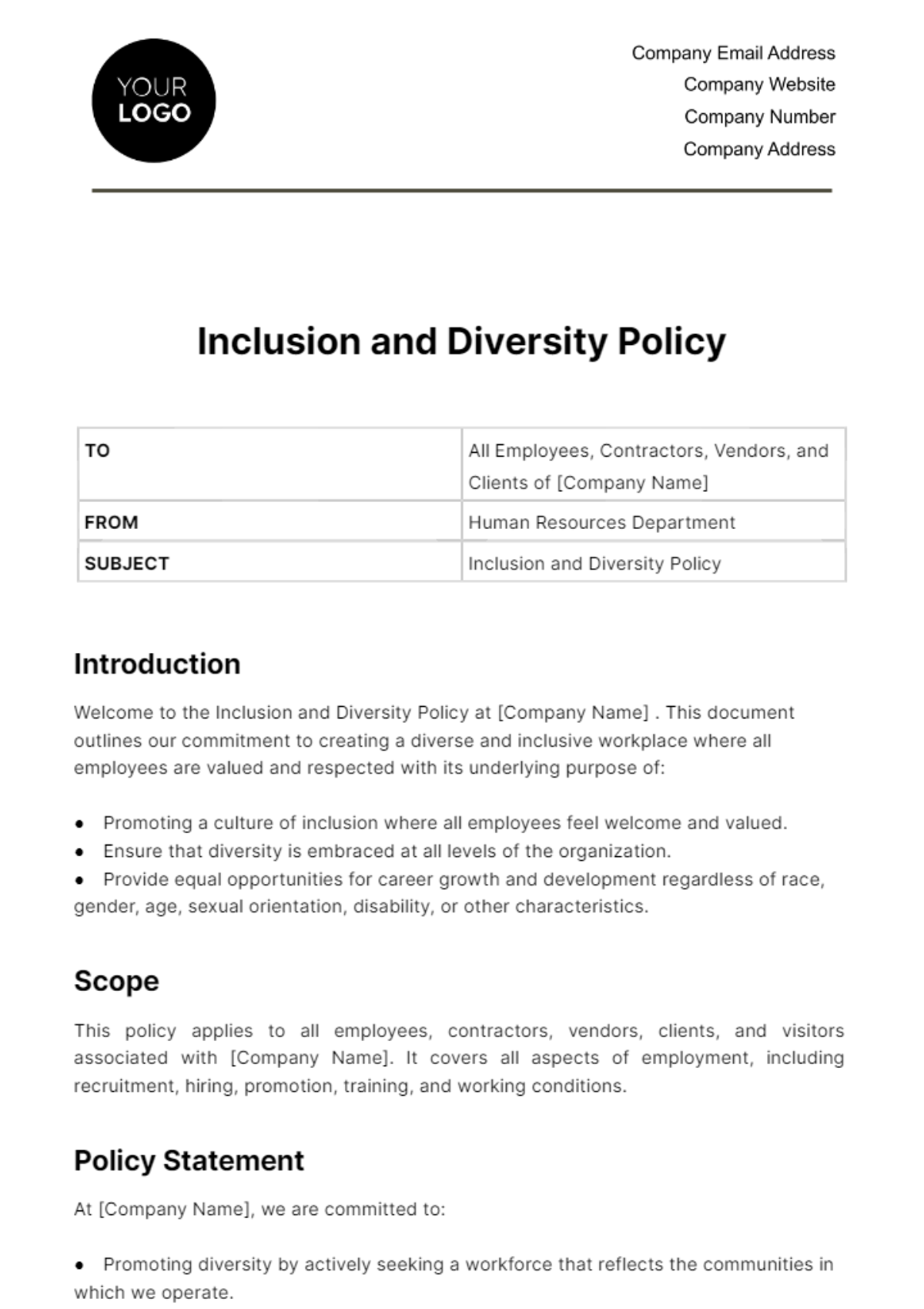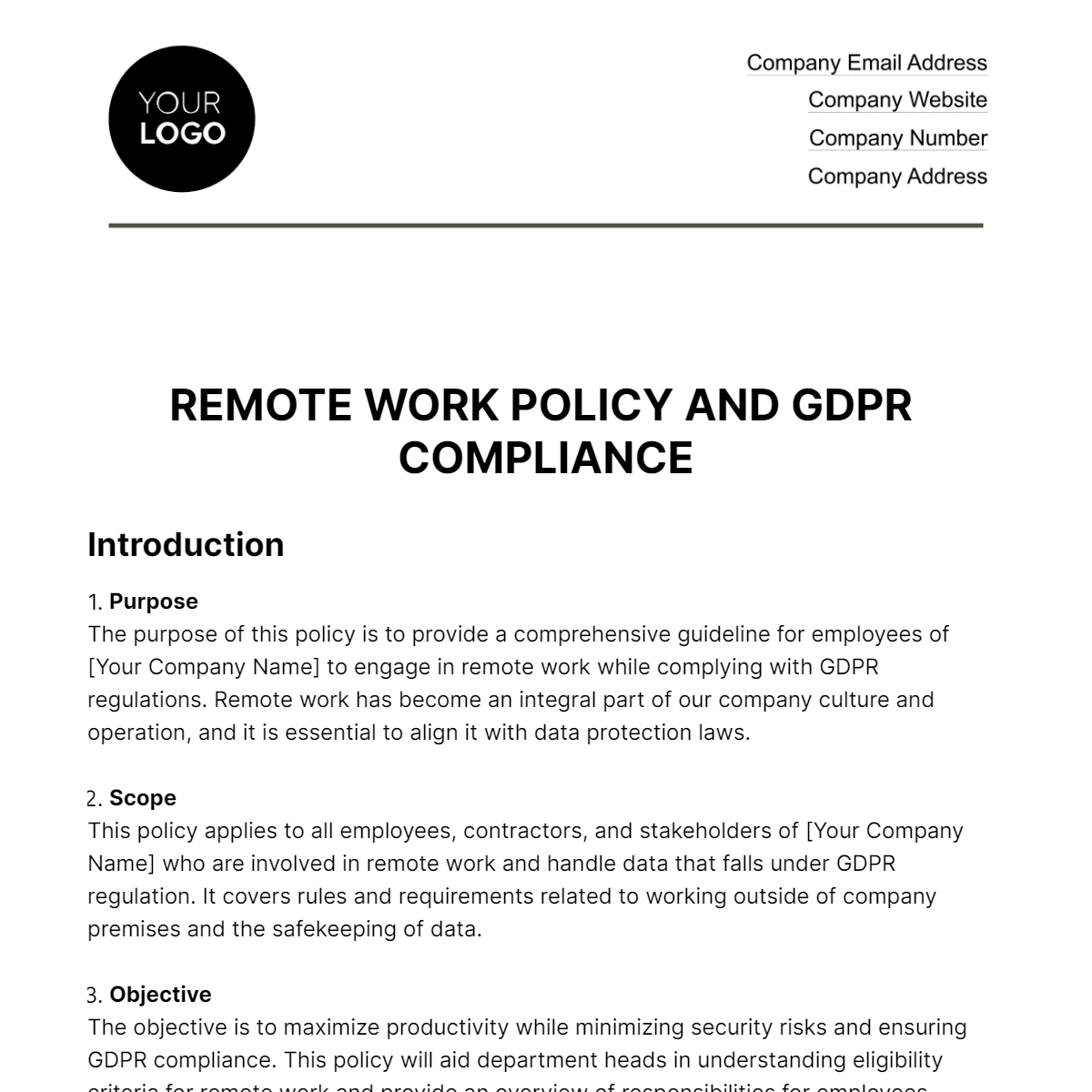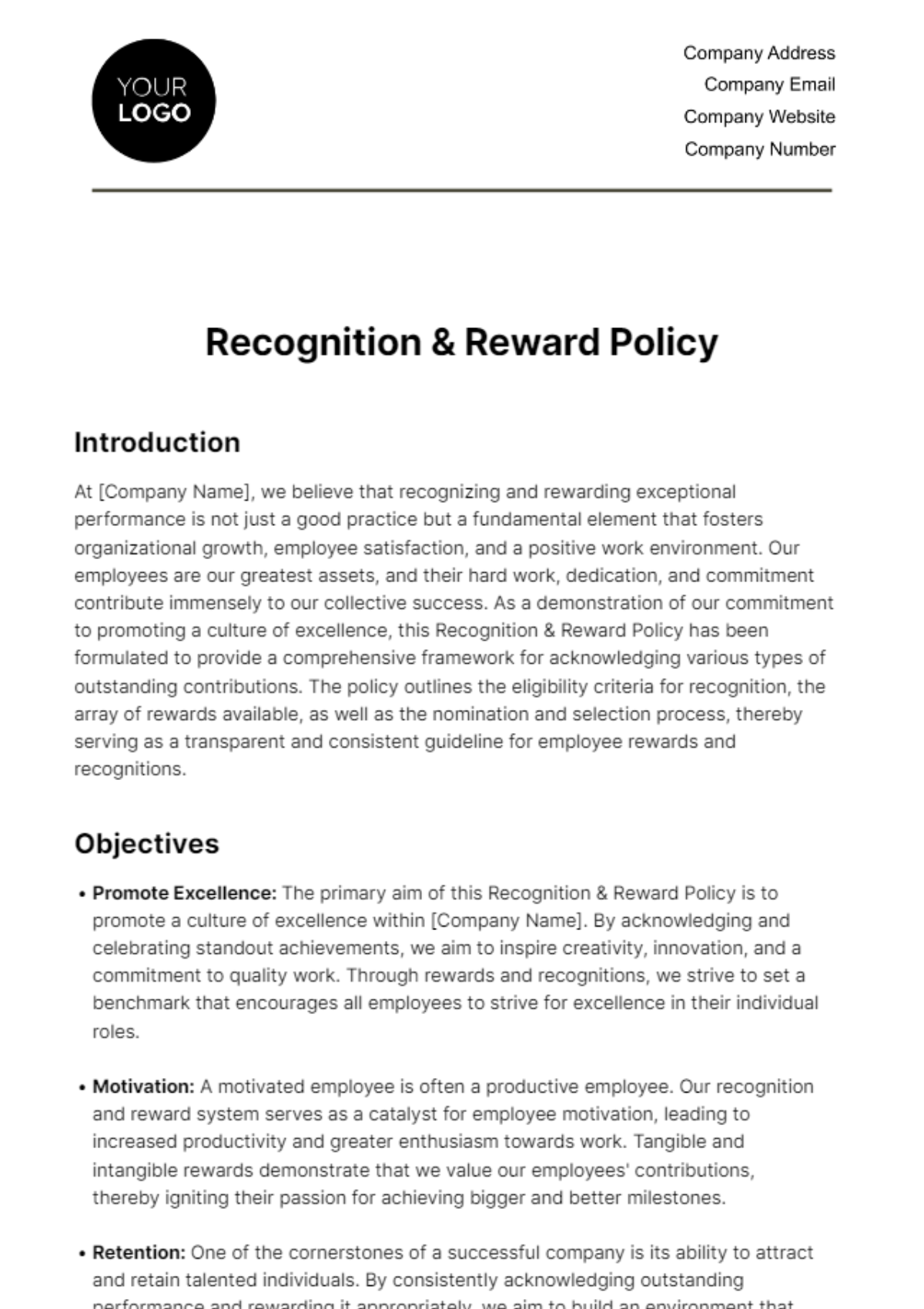Architecture HR Policy
I. Introduction
A. Purpose of the Policy
The HR policy of [Your Company Name], an architecture company, is established to provide a structured and consistent approach to managing human resources. This document outlines the principles and procedures that govern various aspects of employment, ensuring that all employees are treated fairly and that the company complies with legal requirements.
B. Scope
This policy applies to all employees of [Your Company Name], encompassing full-time, part-time, and temporary staff. It covers the entire employment lifecycle, from recruitment and onboarding to performance management and termination, ensuring clarity and consistency across the organization.
C. Objectives
The primary objectives of this HR policy are to:
Establish transparent and equitable employment practices.
Ensure compliance with relevant labor laws and regulations.
Promote a positive and productive work environment.
Support the continuous professional development of employees.
Enhance employee engagement and overall job satisfaction.
D. Definitions and Terminology
Employee: Any individual employed by [Your Company Name].
Full-time Employee: An employee working a minimum of 40 hours per week.
Part-time Employee: An employee working fewer than 40 hours per week.
Temporary Employee: An employee hired for a specific period or project.
Probationary Period: The initial period of employment used to evaluate an employee's performance and suitability for the role.
II. Employment Practices
A. Recruitment and Selection
The recruitment and selection process at [Your Company Name] aims to attract and hire the most qualified candidates who align with our company's values and objectives. The process includes job postings, application screening, multiple rounds of interviews, reference checks, and formal job offers.
The stages of recruitment are as follows:
Stage | Description |
|---|---|
Job Posting | All job vacancies are advertised on the company website and other relevant platforms. |
Application Screening | Applications are evaluated based on predefined criteria to shortlist candidates. |
Interviews | Shortlisted candidates undergo several rounds of interviews to assess their suitability. |
Reference Checks | References are contacted to verify the candidate's background and qualifications. |
Job Offer | Successful candidates are provided with a formal job offer outlining the terms of employment. |
B. Equal Employment Opportunity
[Your Company Name] is dedicated to providing equal employment opportunities to all employees and applicants, ensuring a workplace free from discrimination. Our EEO policy promotes diversity and inclusion and includes provisions for reasonable accommodations for employees with disabilities.
C. Employee Classifications
Employees at [Your Company Name] are categorized into full-time, part-time, temporary, and contract employees. This classification helps in defining the rights and benefits applicable to each category. Full-time employees work a standard 40-hour week, while part-time employees work fewer hours. Temporary employees are hired for specific projects or periods, and contract employees provide services as independent contractors.
D. Employment Contracts
Every employee at [Your Company Name] is required to sign an employment contract that details the terms and conditions of their employment. The contract includes the job title and description, compensation details, work schedule, probationary period, and termination conditions.
The key elements of the employment contract are:
Element | Description |
|---|---|
Job Title and Description | Defines the role and responsibilities of the employee. |
Compensation | Details the salary and benefits package. |
Work Schedule | Specifies the standard working hours and expectations. |
Probationary Period | Outlines the duration and criteria for performance assessment during the initial employment period. |
Termination | Conditions under which employment can be terminated. |
E. Probationary Period
The probationary period at [Your Company Name] typically lasts three to six months, allowing both the employee and employer to evaluate the suitability of the employment arrangement. During this period, regular performance reviews are conducted, and ongoing feedback and support are provided to help the employee succeed.
III. Compensation and Benefits
A. Salary Structure
[Your Company Name] offers a competitive salary structure to attract and retain top talent. The salary structure includes a base salary, salary bands for different job levels, and annual increments based on performance.
B. Payroll Procedures
Our payroll procedures ensure timely and accurate payment of salaries. Salaries are paid monthly on the last working day, with statutory and voluntary deductions applied as necessary. Employees can raise payroll-related queries with the HR department.
C. Performance Bonuses
To reward exceptional performance, [Your Company Name] offers performance bonuses. Eligibility is based on specific performance metrics, and the bonus amount is calculated accordingly. Bonuses are disbursed at specified times, typically at the end of the fiscal year.
D. Health and Welfare Benefits
We provide comprehensive health and welfare benefits, including medical, dental, and vision coverage, life insurance, disability insurance, and an employee assistance program offering counseling and support services.
E. Retirement Plans
[Your Company Name] offers a retirement plan to help employees save for the future. The plan includes a 401(k) with employee and employer contributions, a vesting schedule for employer contributions, and retirement planning support, including financial planning resources and seminars.
IV. Working Hours and Attendance
A. Standard Working Hours
The standard working hours at [Your Company Name] are from 9:00 AM to 6:00 PM, Monday to Friday. To support work-life balance, we offer flexible working hours, allowing employees to start and end their workday within a specified range. Core hours, from 10:00 AM to 4:00 PM, require mandatory presence.
B. Overtime Policy
Our overtime policy ensures that employees are compensated for additional hours worked beyond their standard schedule. Eligibility for overtime pay is defined, and overtime hours are compensated at a higher rate, typically 1.5 times the regular hourly rate. Approval for overtime work must be obtained in advance.
C. Attendance and Punctuality
Employees are expected to maintain regular attendance and punctuality. Attendance is tracked through an electronic system, and absences or tardiness must be reported promptly. Excessive absenteeism or tardiness can lead to disciplinary action, up to and including termination.
D. Breaks and Meal Periods
Employees are entitled to breaks and meal periods during their workday. A 15-minute break is provided for every four hours of work, and a 1-hour meal break is provided for employees working more than six hours. Breaks should be scheduled in a manner that ensures business operations are not disrupted.
E. Remote Work Policy
[Your Company Name] supports remote work arrangements to provide flexibility to employees. Eligibility criteria for remote work include job role suitability and performance. Remote work agreements outline the terms and conditions, including performance monitoring and communication expectations.
V. Leave Policies
A. Annual Leave
[Your Company Name] provides annual leave to promote work-life balance. The number of leave days accrued per year depends on the employee's years of service. Employees must follow the leave application procedure and adhere to the carryover policy for unused leave.
Years of Service | Annual Leave Days |
|---|---|
0-1 Year | 10 Days |
1-3 Years | 15 Days |
3+ Years | 20 Days |
B. Sick Leave
Sick leave is granted to employees who are unable to work due to illness or injury. Employees accrue a specific number of sick leave days per year and must provide medical certification for absences exceeding three days. A sick leave bank allows employees to donate unused sick leave to colleagues in need.
C. Maternity/Paternity Leave
To support employees during childbirth and adoption, [Your Company Name] offers maternity and paternity leave. Maternity leave includes a specified duration and benefits, while paternity leave provides time off for new fathers. Adoption leave is also available, offering similar benefits to those for birth parents.
D. Bereavement Leave
Bereavement leave is granted to employees who experience the loss of an immediate family member. The policy specifies the number of days provided for bereavement leave, defines eligible family members, and outlines the procedure for applying for leave.
E. Unpaid Leave
Unpaid leave is available for employees who need extended time off beyond their accrued leave. The policy defines eligibility criteria, maximum duration, and the approval process for unpaid leave requests.
VI. Performance Management
A. Performance Appraisal
At [Your Company Name], performance appraisals are conducted annually to assess employee achievements, identify areas for improvement, and set goals for the upcoming year. The appraisal process involves self-assessment, peer review, and manager evaluation.
Appraisal Stage | Description |
|---|---|
Self-Assessment | Employees evaluate their own performance against set objectives. |
Peer Review | Colleagues provide feedback on the employee's performance and teamwork. |
Manager Evaluation | Managers assess the employee's performance, considering self-assessment and peer review feedback. |
Goal Setting | Together, managers and employees set objectives for the upcoming year. |
B. Performance Improvement Plans
Employees who do not meet performance expectations may be placed on a Performance Improvement Plan (PIP). The PIP outlines specific performance issues, sets clear improvement targets, and provides resources and support for achieving these targets. Regular progress reviews are conducted to ensure that the employee is on track to meet the required standards.
C. Career Development
[Your Company Name] is committed to supporting the career growth of its employees. This includes providing opportunities for training, mentoring, and professional development. Employees are encouraged to pursue relevant certifications and further education, with partial or full financial support from the company.
D. Recognition and Rewards
Recognition and rewards are integral to our performance management system. Employees demonstrating exceptional performance or innovative contributions are acknowledged through awards, bonuses, and other incentives. This recognition fosters a motivated and engaged workforce.
VII. Employee Conduct
A. Code of Conduct
[Your Company Name] has established a comprehensive Code of Conduct that outlines the expected behavior and ethical standards for all employees. This code covers interactions with colleagues, clients, and other stakeholders, emphasizing integrity, respect, and professionalism.
B. Dress Code
The dress code at [Your Company Name] is business casual, with specific guidelines provided for different roles and occasions. Employees are expected to dress appropriately to maintain a professional image while ensuring comfort and safety. Casual attire may be permitted on designated days or for certain events.
C. Conflict of Interest
Employees must avoid any activities or relationships that could create a conflict of interest with their duties at [Your Company Name]. This includes outside employment, business interests, and personal relationships that could influence decision-making. Disclosure of potential conflicts is mandatory, and appropriate measures are taken to manage them.
D. Disciplinary Procedures
Disciplinary procedures are in place to address violations of company policies or the Code of Conduct. The process involves a formal investigation, documentation of the incident, and a fair hearing. Disciplinary actions can range from verbal warnings to termination, depending on the severity of the offense.
Disciplinary Action | Description |
|---|---|
Verbal Warning | Informal discussion to address minor infractions and set expectations for improvement. |
Written Warning | Formal documentation of the infraction and a plan for corrective action. |
Suspension | Temporary removal from duties, with or without pay, pending further investigation. |
Termination | Permanent dismissal from employment for severe or repeated violations. |
E. Substance Abuse Policy
[Your Company Name] maintains a zero-tolerance policy towards substance abuse. Employees are prohibited from using, possessing, or being under the influence of drugs or alcohol while on company premises or during work hours. Violation of this policy can result in immediate termination.
VIII. Health and Safety
A. Workplace Safety
Ensuring a safe work environment is a top priority at [Your Company Name]. The company complies with all relevant health and safety regulations and conducts regular safety audits. Employees are trained in safety protocols and emergency procedures.
Safety Measure | Description |
|---|---|
Safety Training | Regular sessions on workplace safety, emergency response, and first aid. |
Safety Equipment | Provision of necessary safety gear and equipment, such as helmets and safety glasses. |
Incident Reporting | A clear procedure for reporting and addressing workplace accidents and hazards. |
Regular Inspections | Routine safety audits and inspections to identify and mitigate potential risks. |
B. Ergonomics
To promote employee well-being, [Your Company Name] emphasizes ergonomic practices. Workstations are designed to minimize strain and injury, and employees are provided with ergonomic furniture and accessories. Regular assessments and adjustments ensure ongoing comfort and safety.
C. Mental Health Support
Recognizing the importance of mental health, [Your Company Name] offers various support resources. This includes access to counseling services, stress management programs, and mental health awareness training. An Employee Assistance Program (EAP) is available to provide confidential support and guidance.
D. Health Screenings
The company conducts regular health screenings and wellness programs to monitor and promote employee health. These screenings include general health checks, vaccination clinics, and fitness challenges.
IX. Training and Development
A. Training Programs
[Your Company Name] offers a variety of training programs to enhance employee skills and knowledge. These programs cover technical skills, soft skills, leadership development, and compliance training. Training is delivered through workshops, online courses, and on-the-job training.
Training Type | Description |
|---|---|
Technical Training | Focuses on job-specific skills and knowledge, such as software proficiency and design techniques. |
Soft Skills Training | Enhances interpersonal skills, communication, and teamwork. |
Leadership Training | Prepares employees for management and leadership roles. |
Compliance Training | Educates employees on legal and regulatory requirements relevant to their roles. |
B. Professional Development
Continuous professional development is encouraged through opportunities for further education, certifications, and attending industry conferences. Employees are supported in their pursuit of advanced degrees and specialized training, with reimbursement policies in place for tuition and certification fees.
D. Mentorship Programs
Mentorship programs pair experienced employees with newer staff to provide guidance, support, and knowledge transfer. These programs foster a culture of learning and development, helping mentees achieve their career goals and enhancing overall job satisfaction.
E. Knowledge Sharing
[Your Company Name] promotes a culture of knowledge sharing through regular seminars, workshops, and team meetings. Employees are encouraged to share their expertise and experiences, fostering a collaborative and innovative work environment.
X. Employee Relations
A. Communication Channels
Effective communication is essential for maintaining positive employee relations at [Your Company Name]. The company utilizes various channels, including town hall meetings, newsletters, and an intranet portal, to keep employees informed and engaged.
Communication Channel | Description |
|---|---|
Town Hall Meetings | Regular meetings where management shares updates and addresses employee concerns. |
Newsletters | Monthly publications that highlight company news, achievements, and upcoming events. |
Intranet Portal | A centralized online platform for company information, policies, and resources. |
Suggestion Box | An anonymous system for employees to submit feedback and suggestions. |
B. Grievance Handling
A formal grievance-handling procedure is in place to address employee concerns and disputes. Employees can report grievances through a structured process, ensuring confidentiality and impartiality. The HR department investigates and resolves grievances promptly.
C. Employee Feedback
Regular employee feedback is gathered through surveys, focus groups, and one-on-one meetings. This feedback is used to identify areas for improvement and implement changes that enhance the employee experience. The company values transparency and acts on feedback to foster a positive work environment.
D. Team Building Activities
Team-building activities are organized to strengthen relationships and promote collaboration among employees. These activities include off-site retreats, team outings, and in-office events designed to boost morale and teamwork.
E. Conflict Resolution
Conflict resolution mechanisms are in place to address interpersonal conflicts and workplace disputes. Trained mediators facilitate discussions between conflicting parties, aiming to reach a mutually acceptable resolution. The process is designed to be fair and impartial, ensuring all parties are heard.
XI. Termination and Exit Procedures
A. Voluntary Resignation
Employees who choose to resign must provide a notice period as specified in their employment contract. The resignation process includes submitting a formal resignation letter, conducting an exit interview, and completing necessary documentation.
Resignation Step | Description |
|---|---|
Notice Period | Employees must give advance notice as per their employment contract (typically 2-4 weeks). |
Resignation Letter | A formal letter stating the intent to resign and the last working day. |
Exit Interview | An interview will be conducted by HR to gather feedback and understand the reasons for the resignation. |
Documentation | Completion of necessary paperwork and return of company property. |
B. Involuntary Termination
Involuntary termination may occur due to performance issues, misconduct, or organizational restructuring. The termination process is handled with sensitivity and compliance with legal requirements. Affected employees are provided with severance packages and outplacement support.
C. Exit Interviews
Exit interviews are conducted with departing employees to gain insights into their experiences and identify potential areas for improvement within the company. The feedback collected is used to enhance employee retention and satisfaction.
D. Final Settlement
The final settlement process ensures that all dues are cleared, including salary, leave encashment, and any other outstanding payments. Employees are required to return all company property and complete necessary clearance procedures.
E. Rehire Policy
[Your Company Name] has a rehire policy that allows former employees to be considered for re-employment. The policy outlines the criteria for rehire eligibility and the process for reapplying. Former employees who left in good standing and meet the current job requirements are eligible for rehire.
XII. Policy Review and Updates
A. Policy Review Process
The HR policy of [Your Company Name] is reviewed periodically to ensure it remains relevant and compliant with legal requirements. The review process involves gathering feedback from employees, consulting with legal experts, and benchmarking against industry standards.
Review Step | Description |
|---|---|
Feedback Collection | Gathering input from employees and stakeholders through surveys and meetings. |
Legal Consultation | Consulting with legal experts to ensure compliance with current laws and regulations. |
Benchmarking | Comparing policies with industry standards to identify areas for improvement. |
Policy Revision | Updating policies based on feedback, legal advice, and benchmarking results. |
B. Communication of Updates
Policy updates are communicated to all employees through formal announcements, email notifications, and the company intranet. Employees are required to acknowledge receipt and understanding of the updated policies.
C. Training on Policy Changes
Training sessions are conducted to educate employees on significant policy changes. These sessions ensure that employees understand the new policies and how they impact their roles and responsibilities.
D. Continuous Improvement
[Your Company Name] is committed to continuous improvement of its HR policies. Regular reviews and updates are part of this commitment, ensuring that policies evolve with changing business needs and regulatory requirements. Feedback from employees is actively sought and incorporated into the policy review process.
